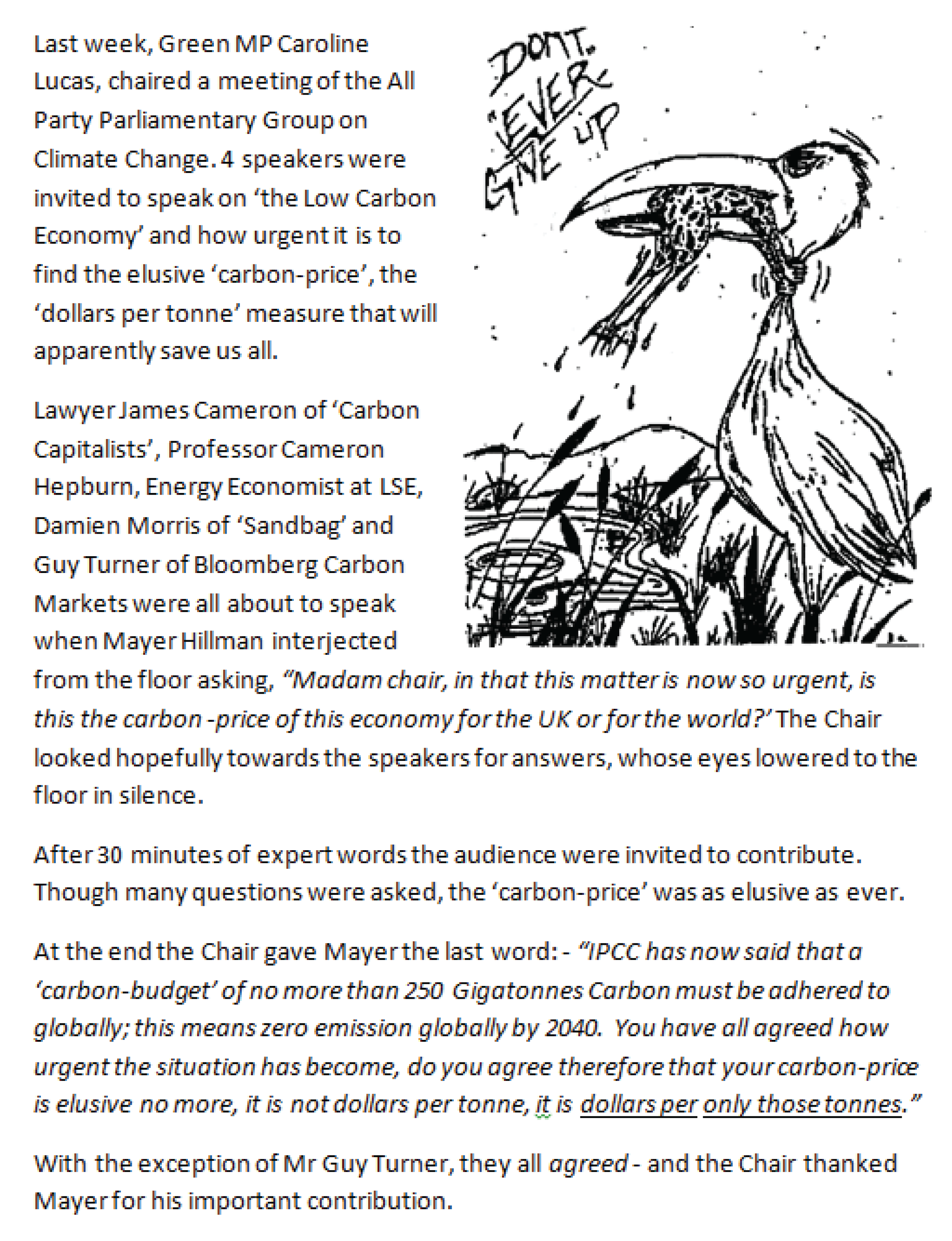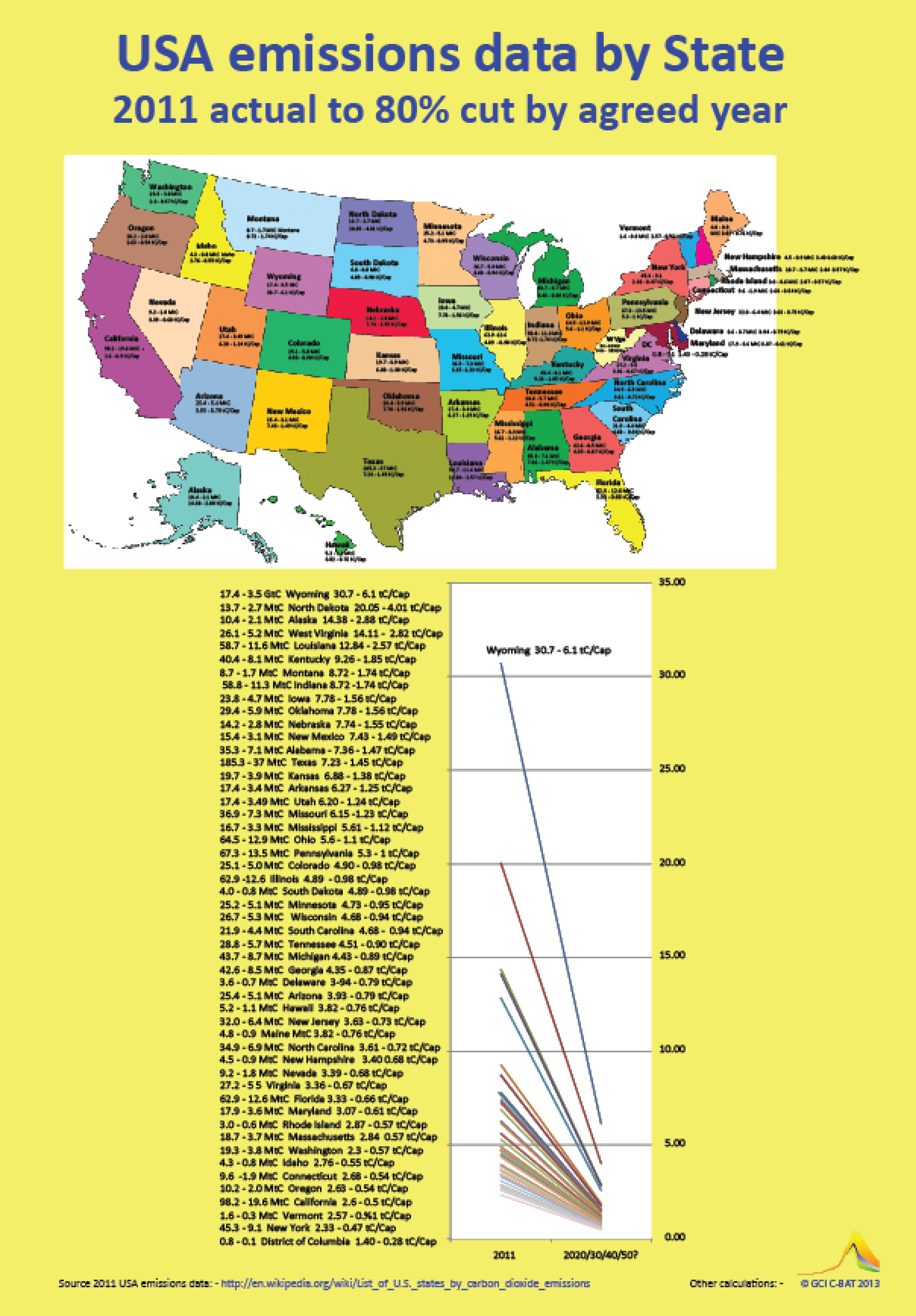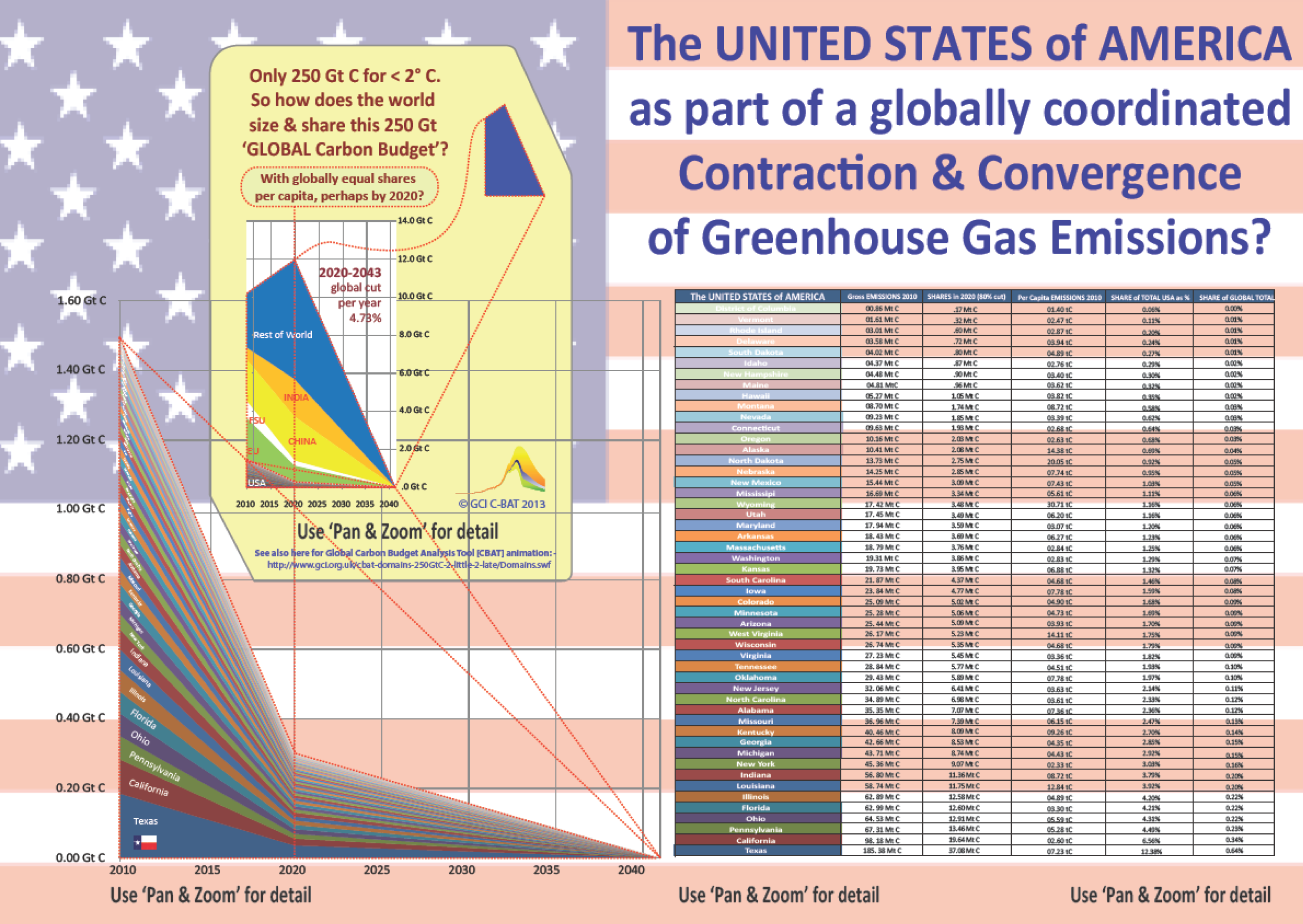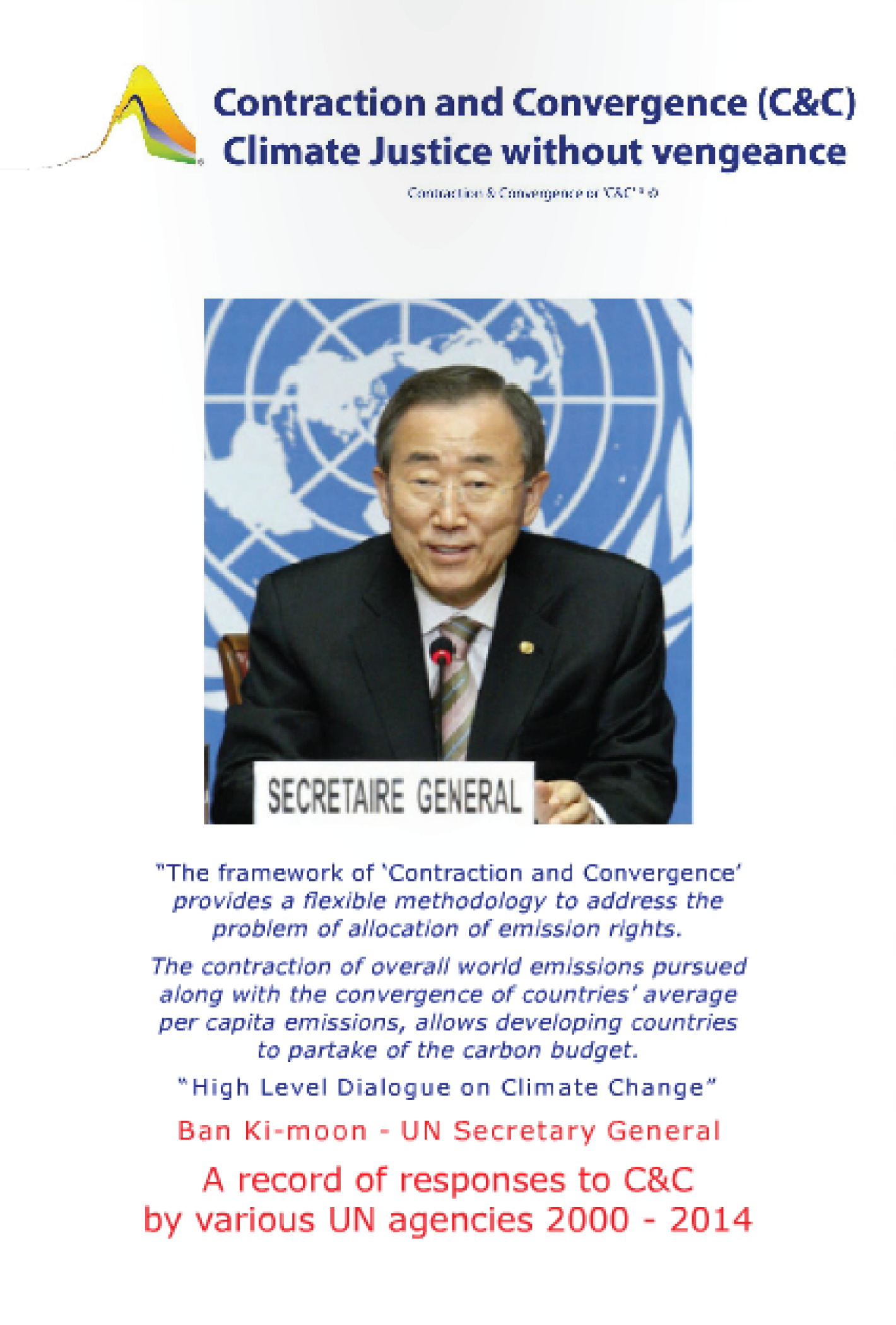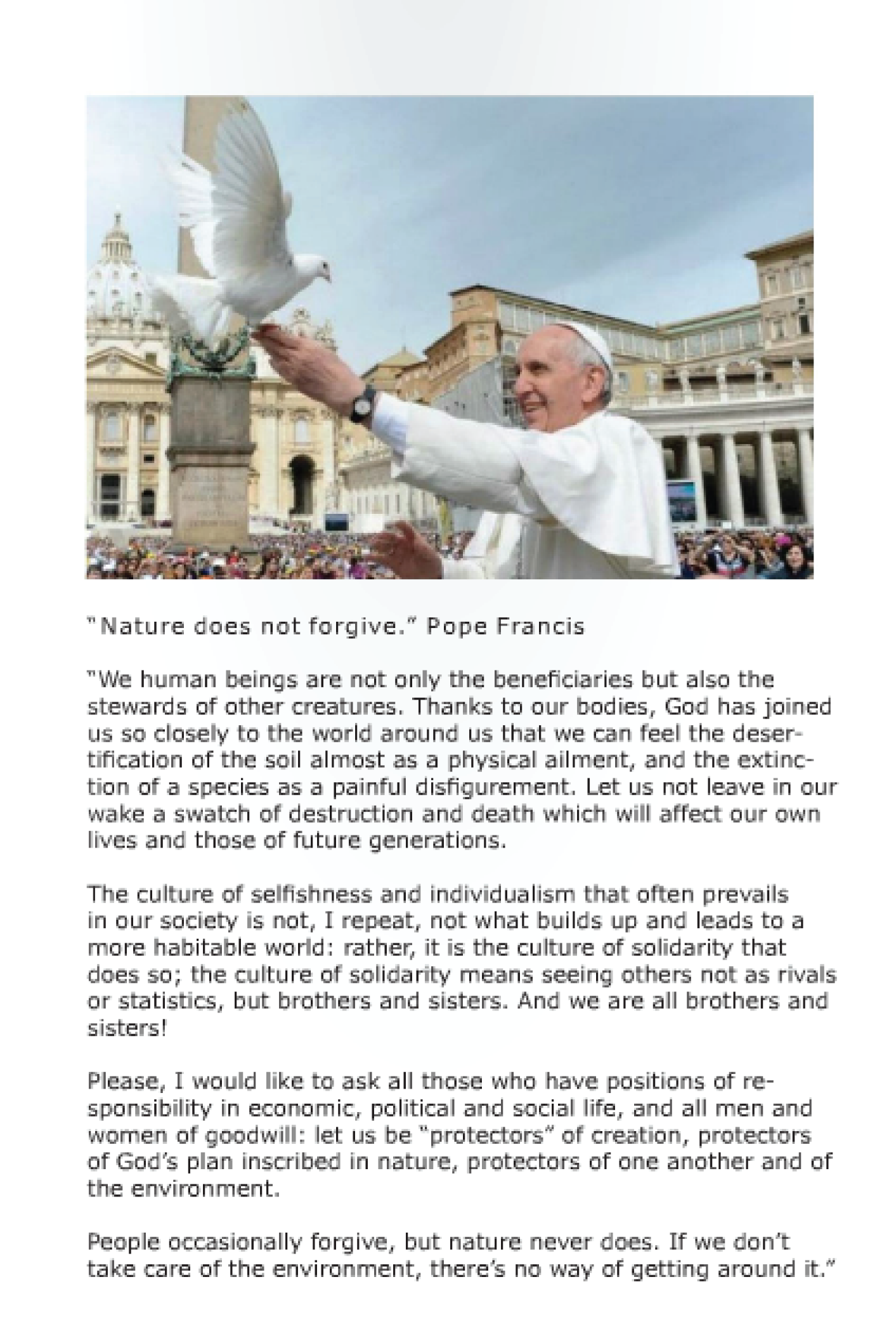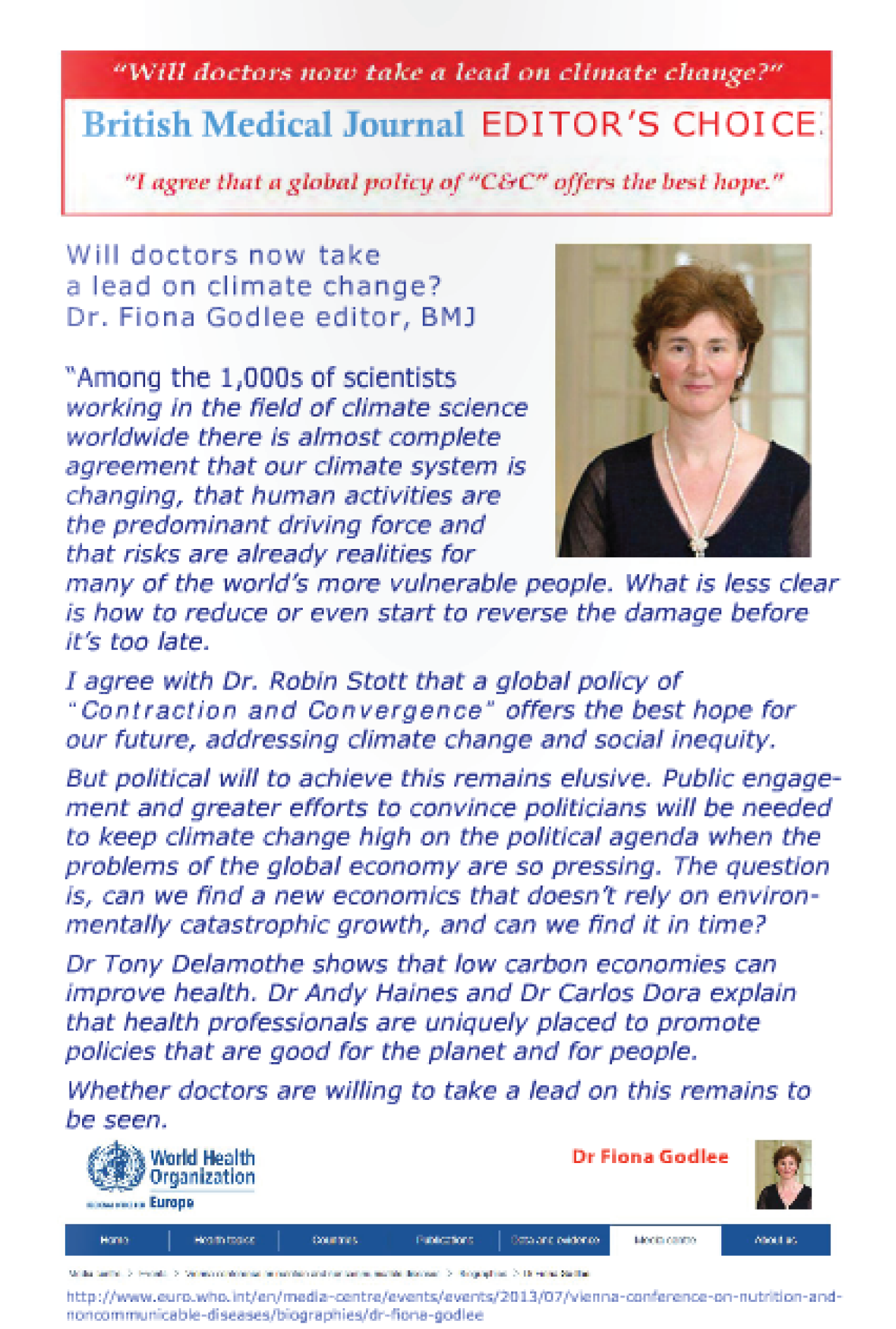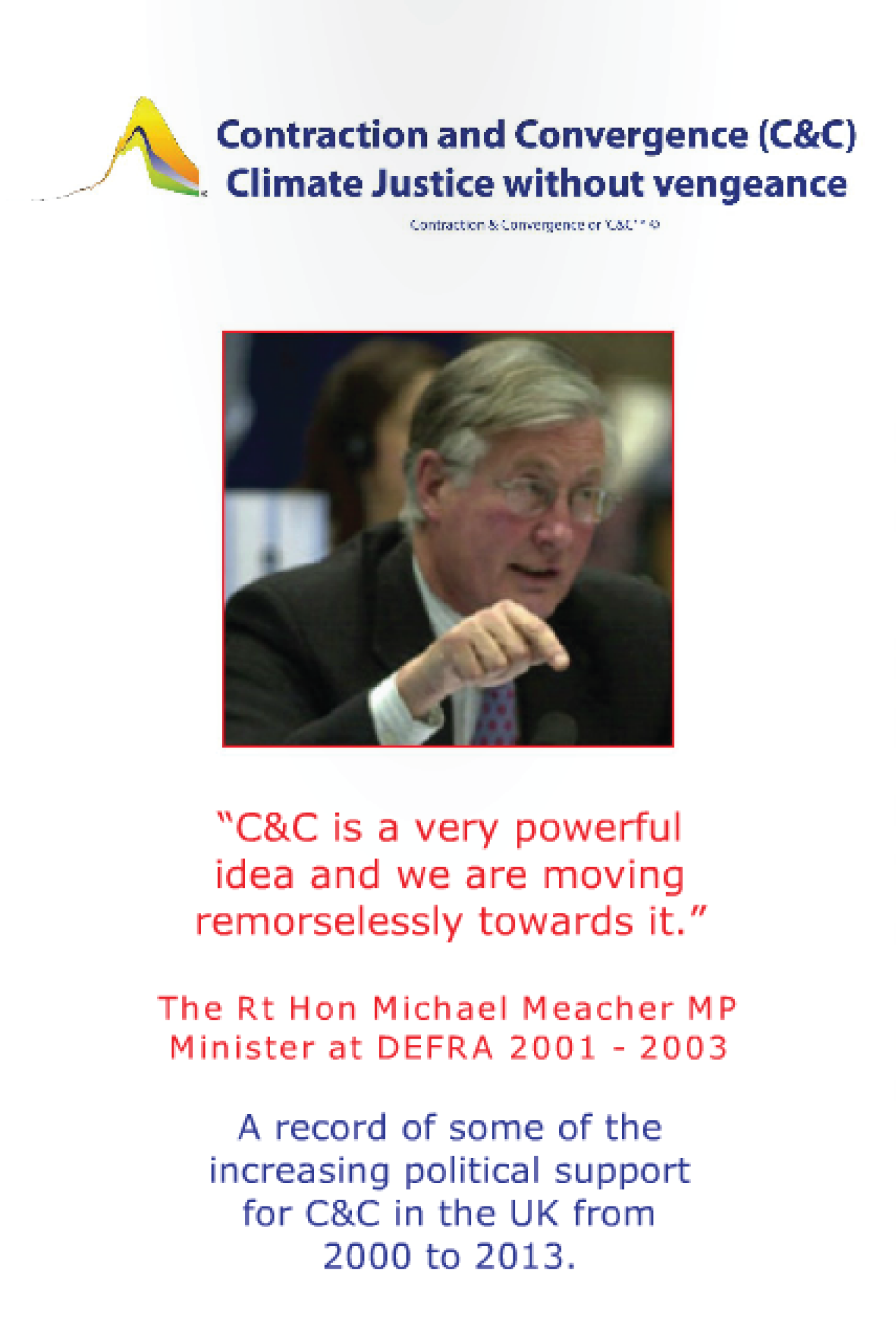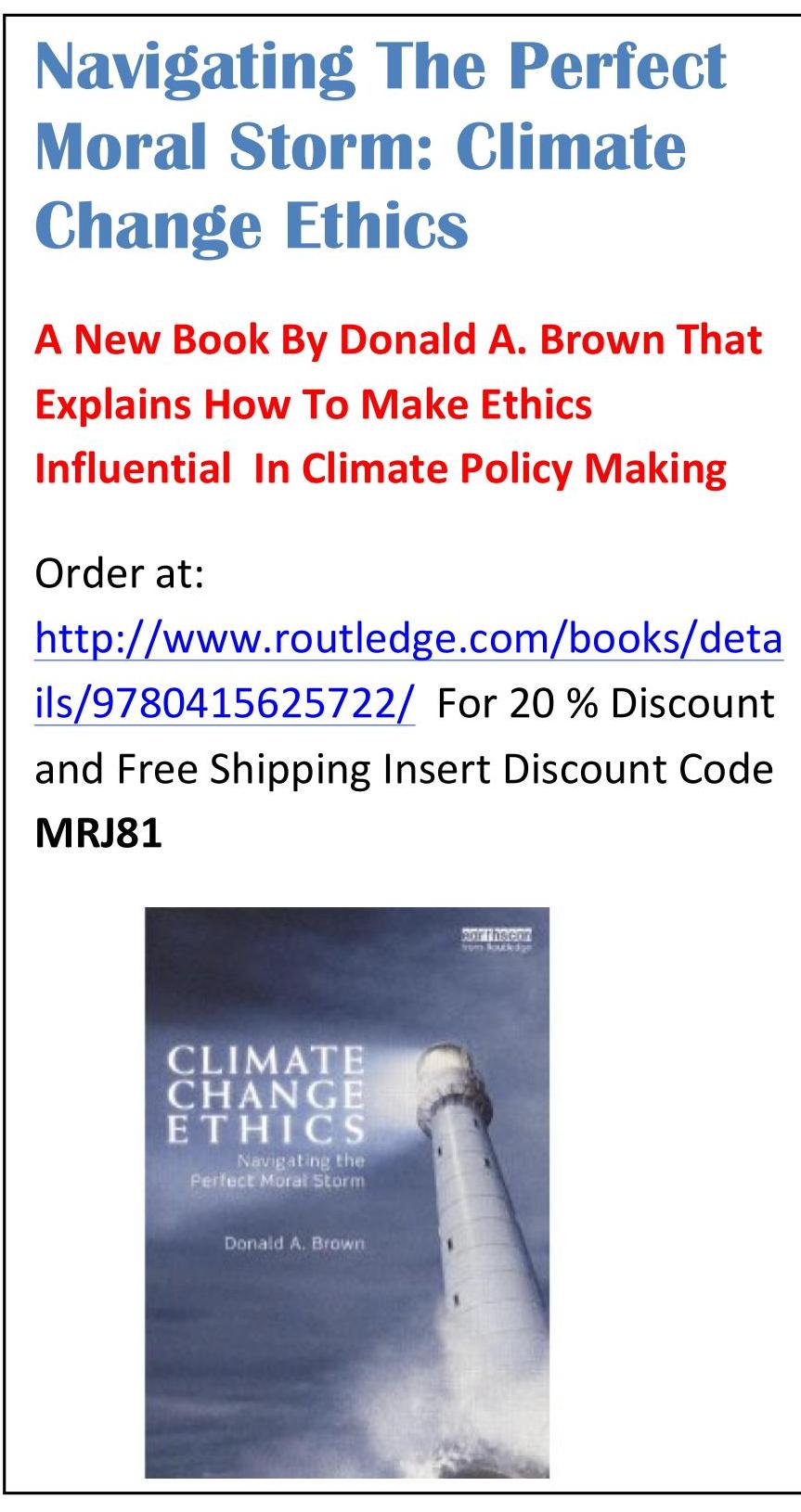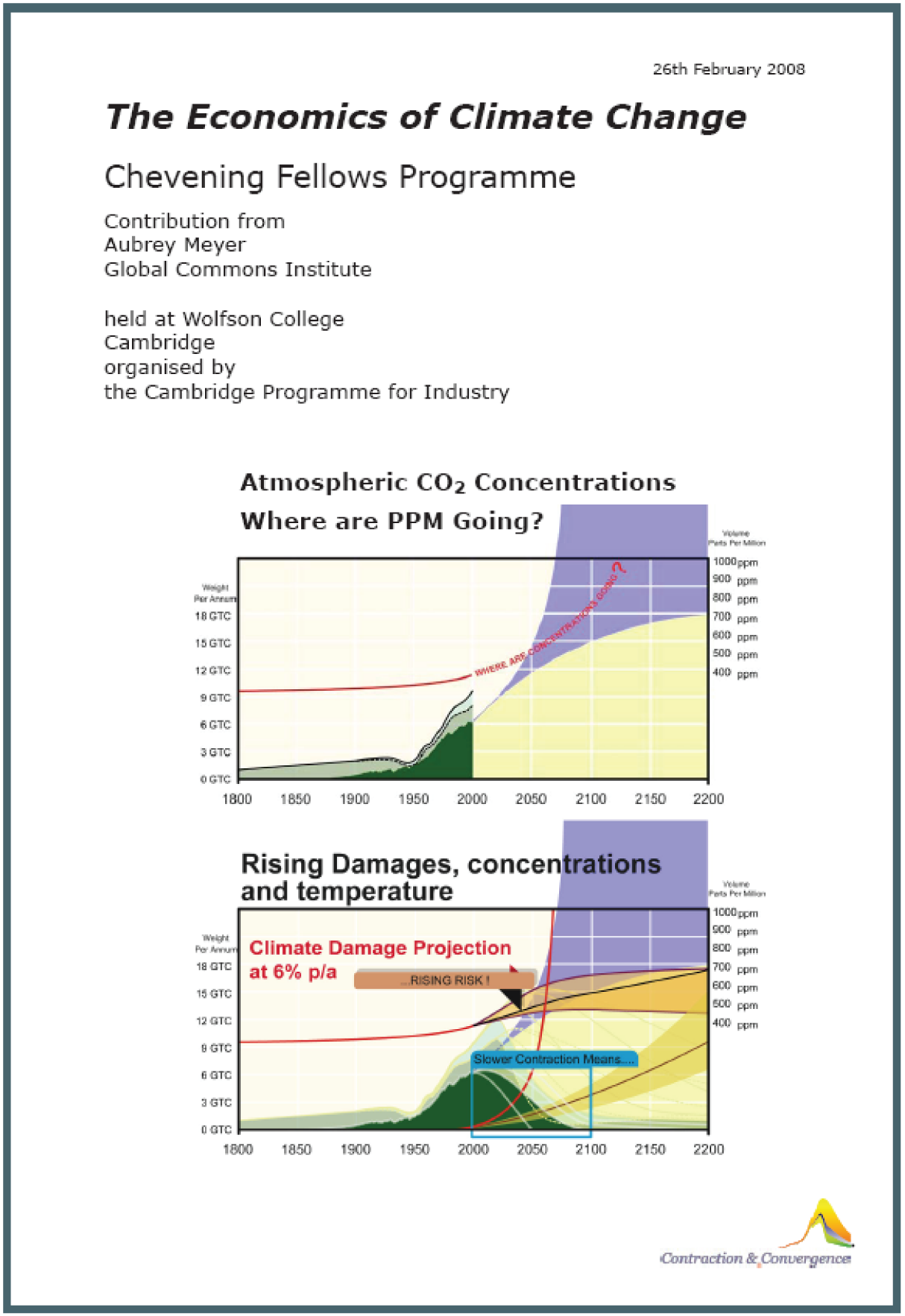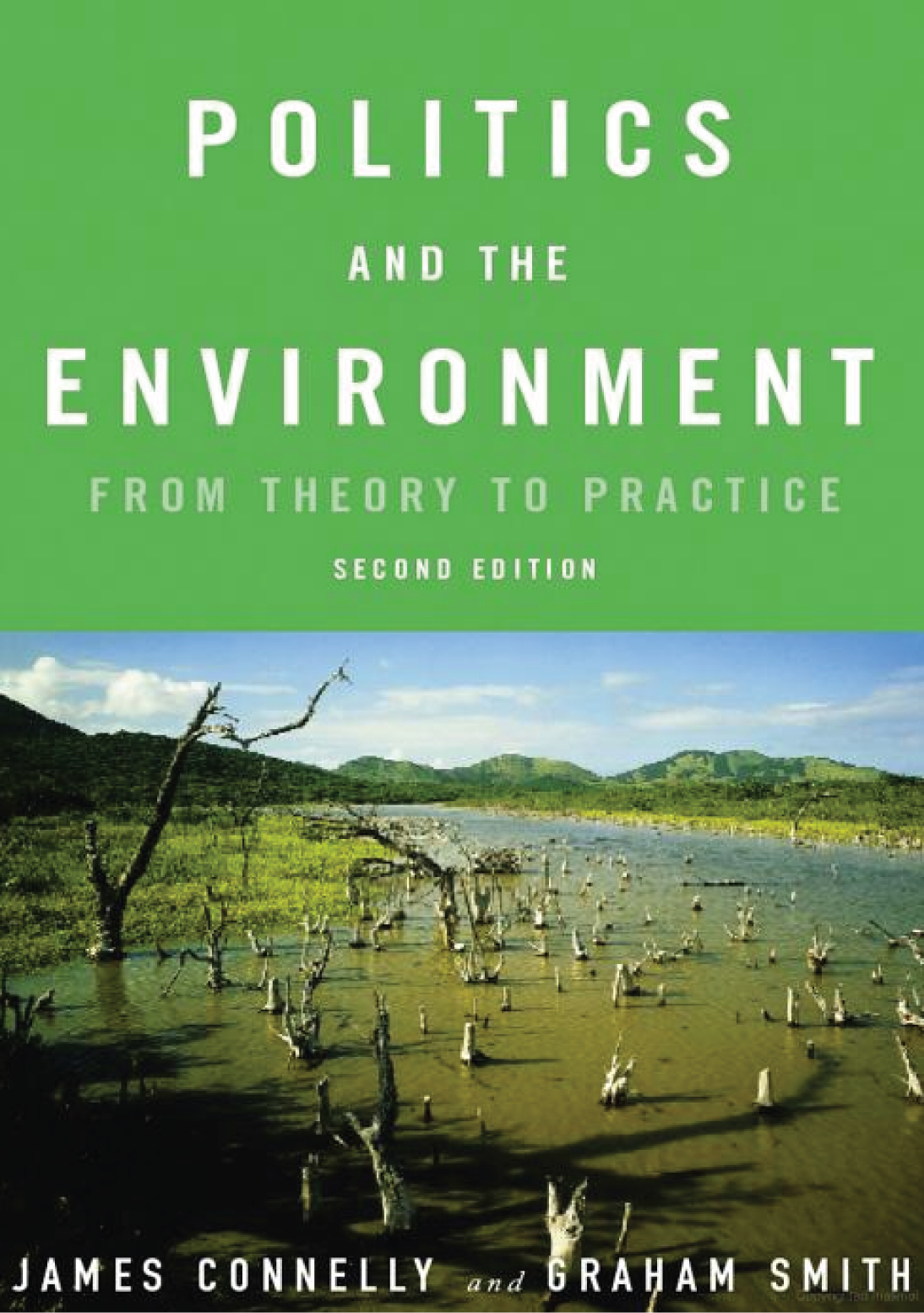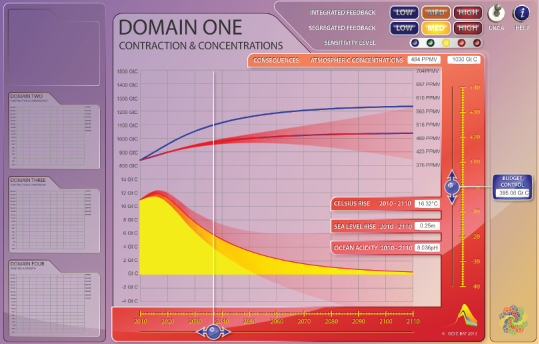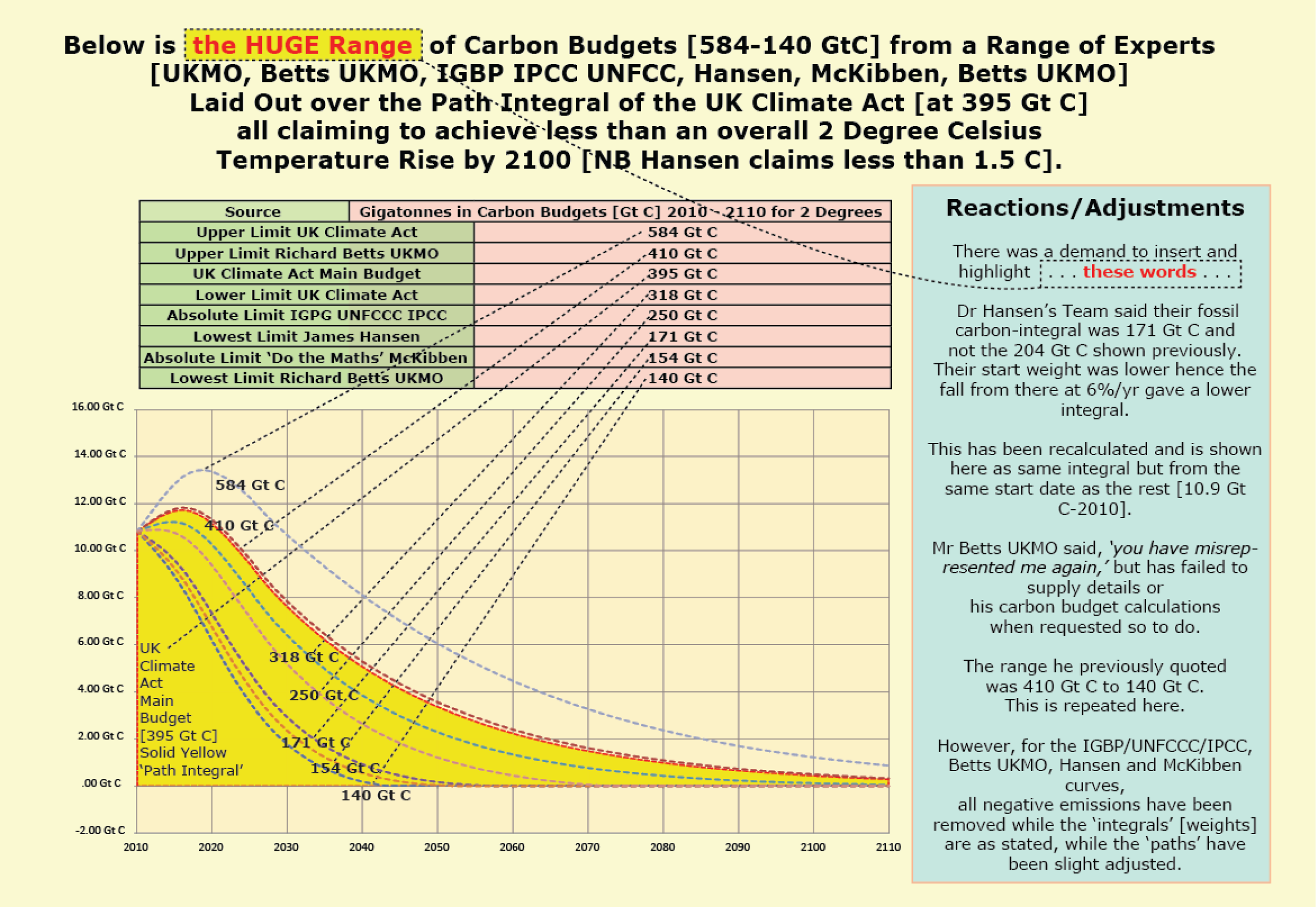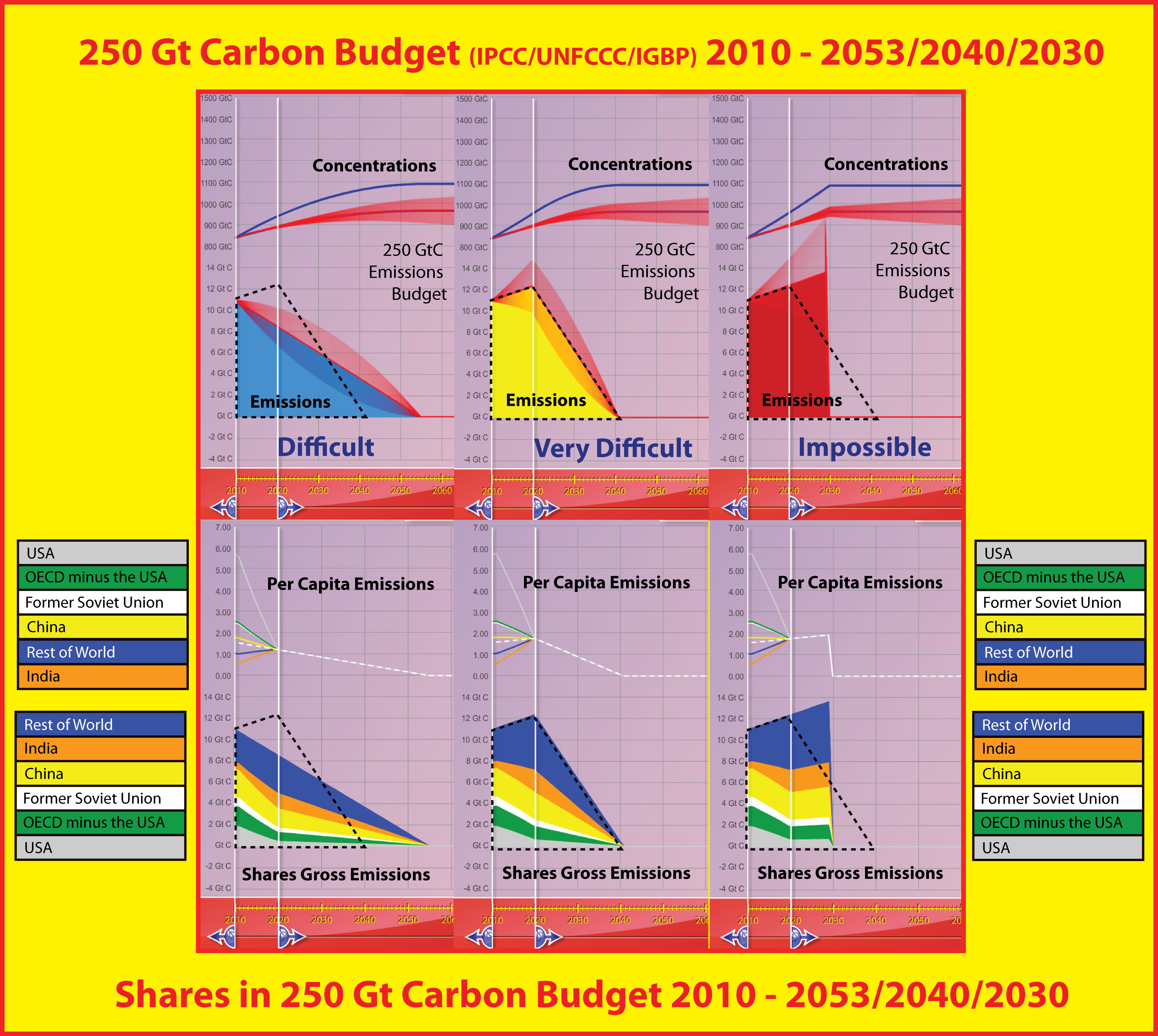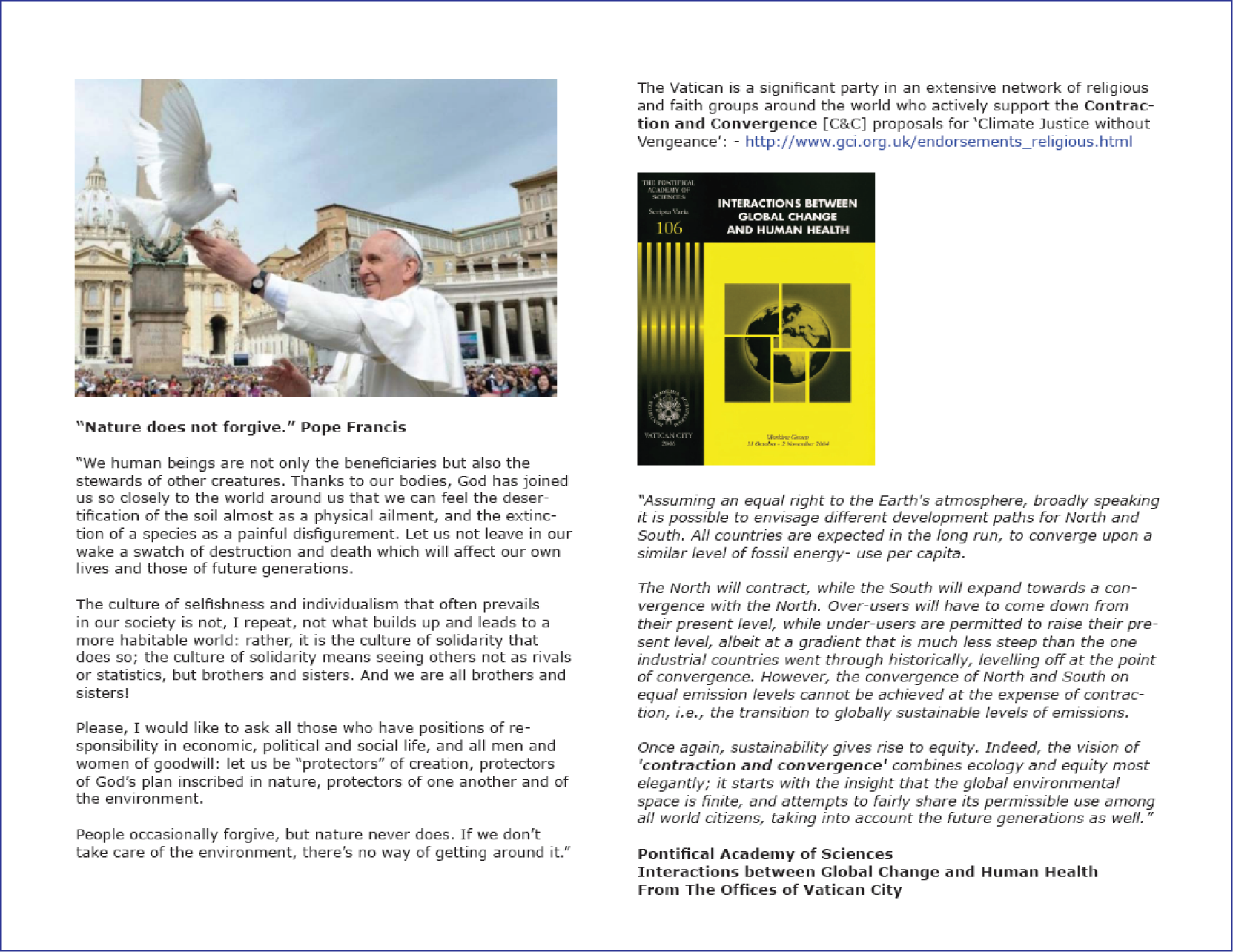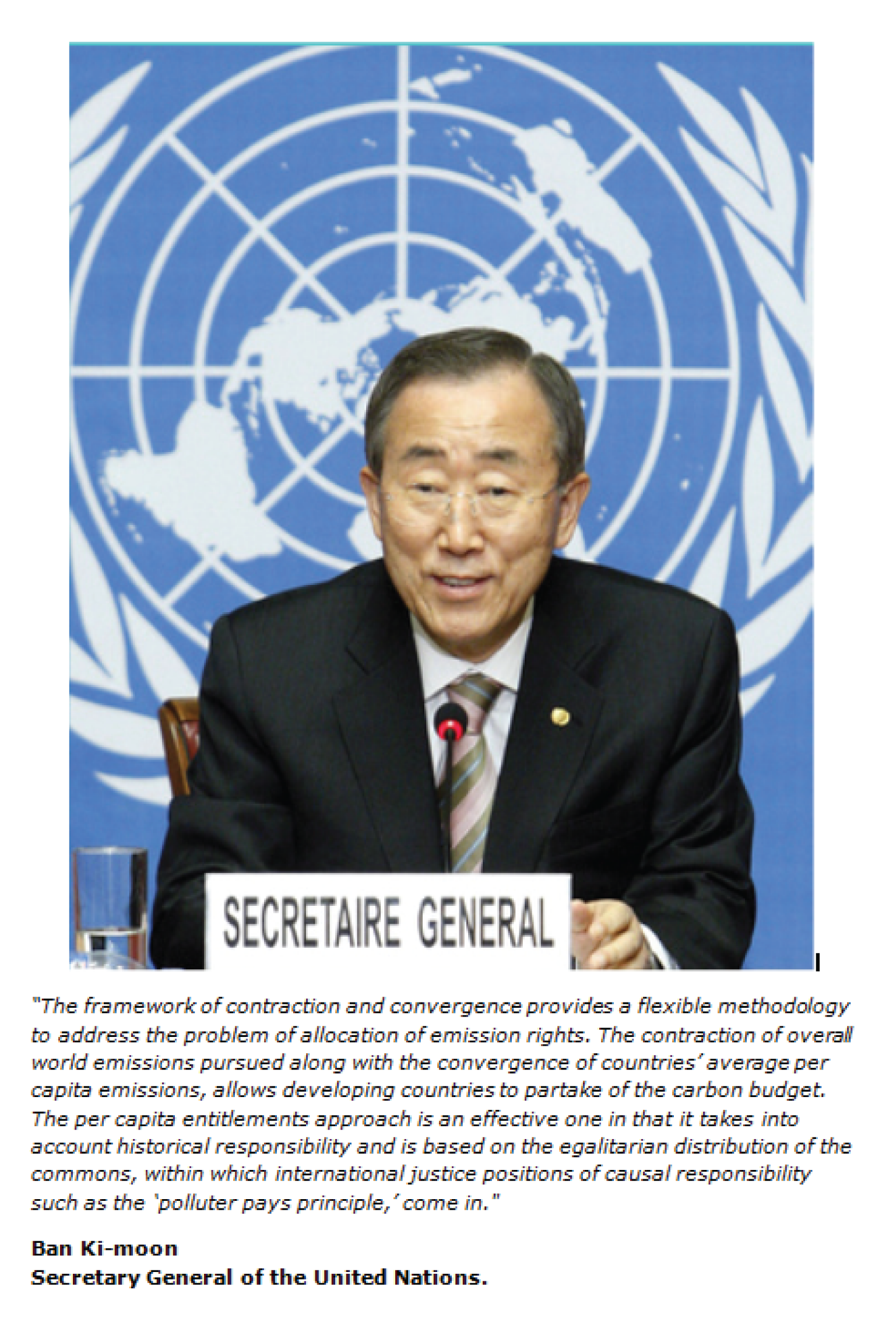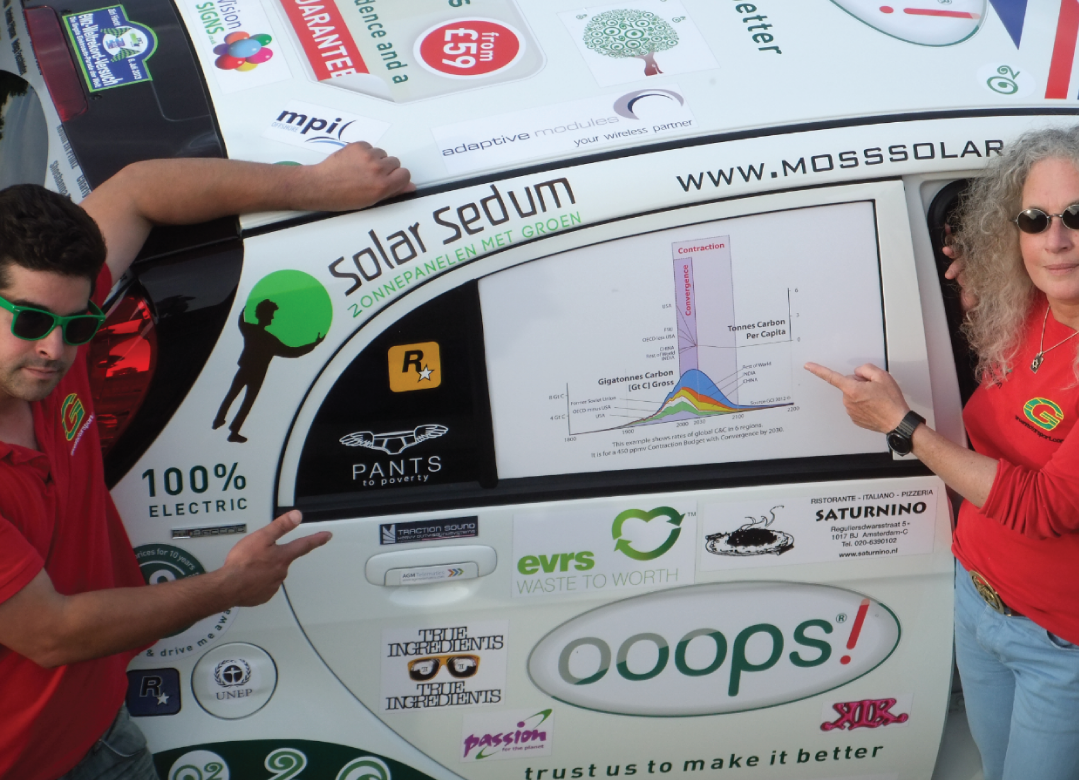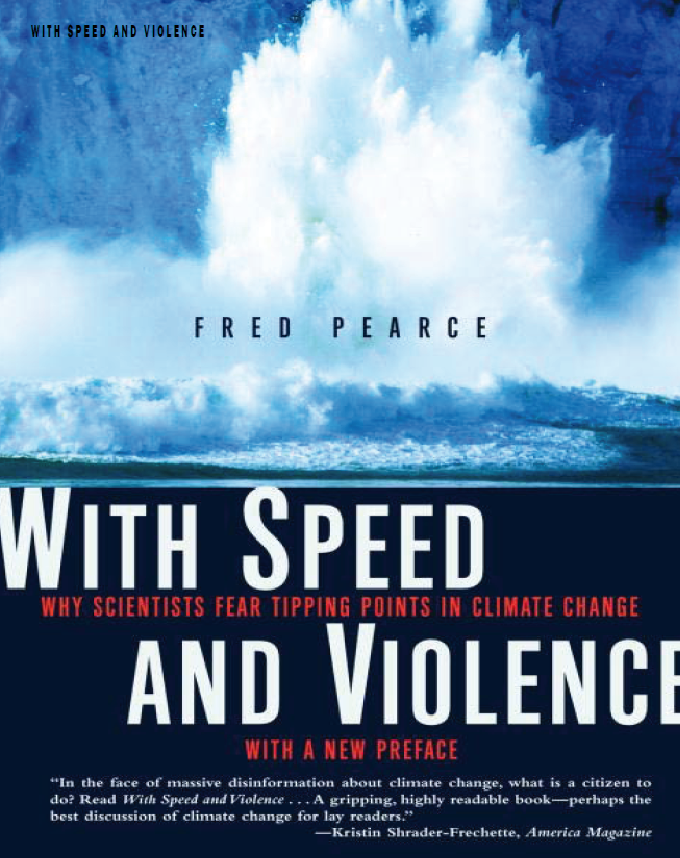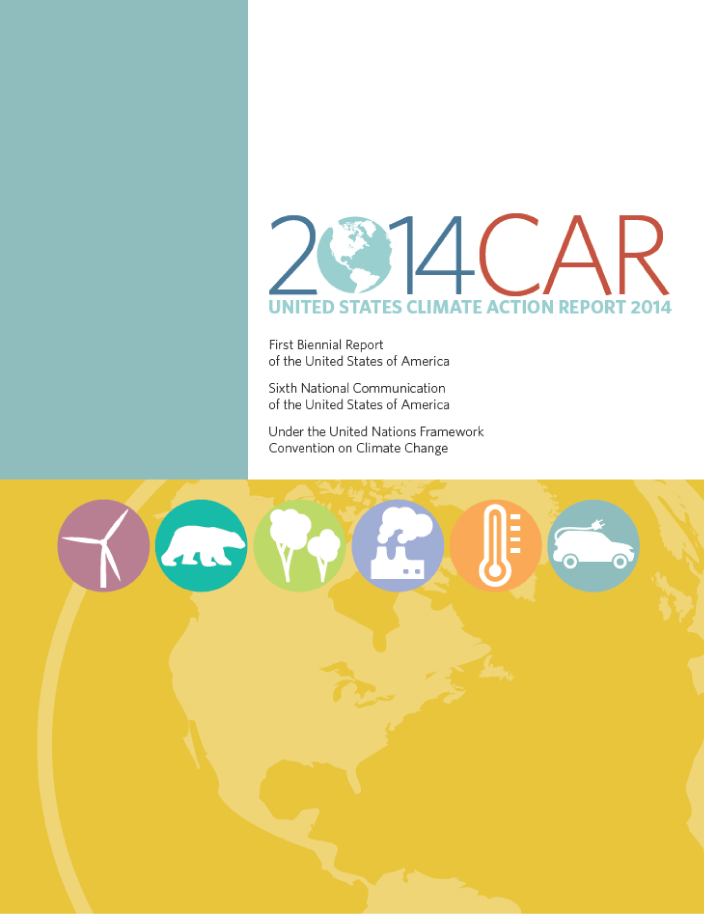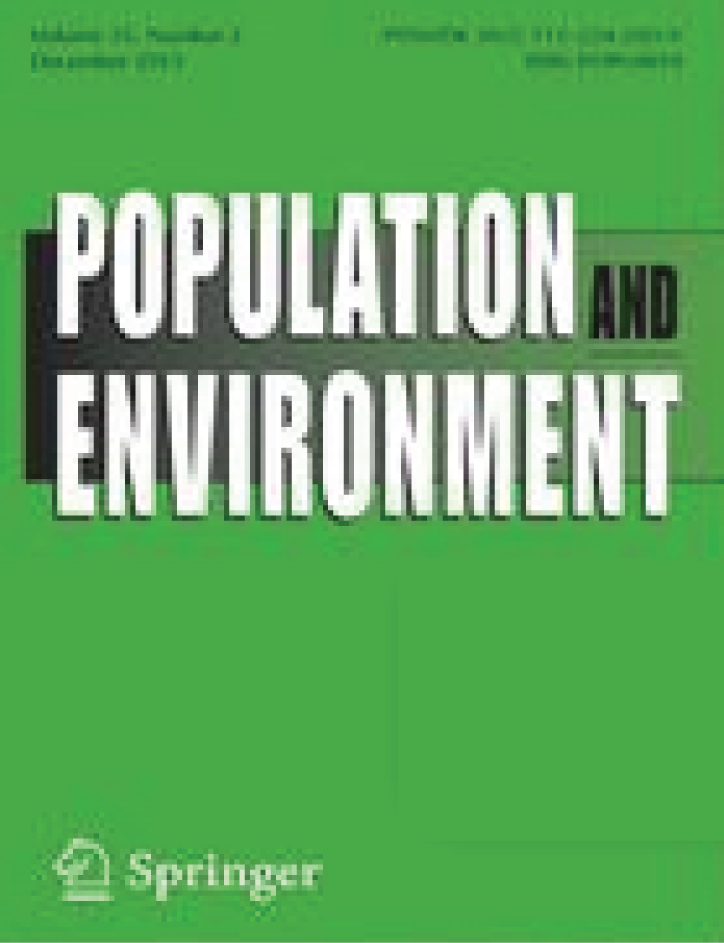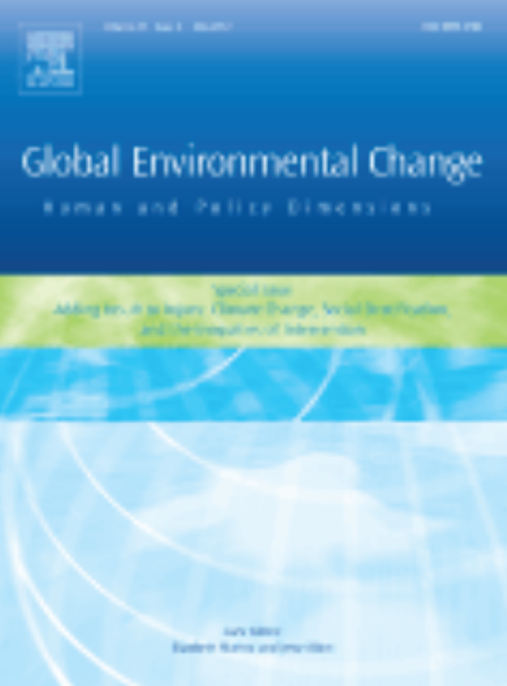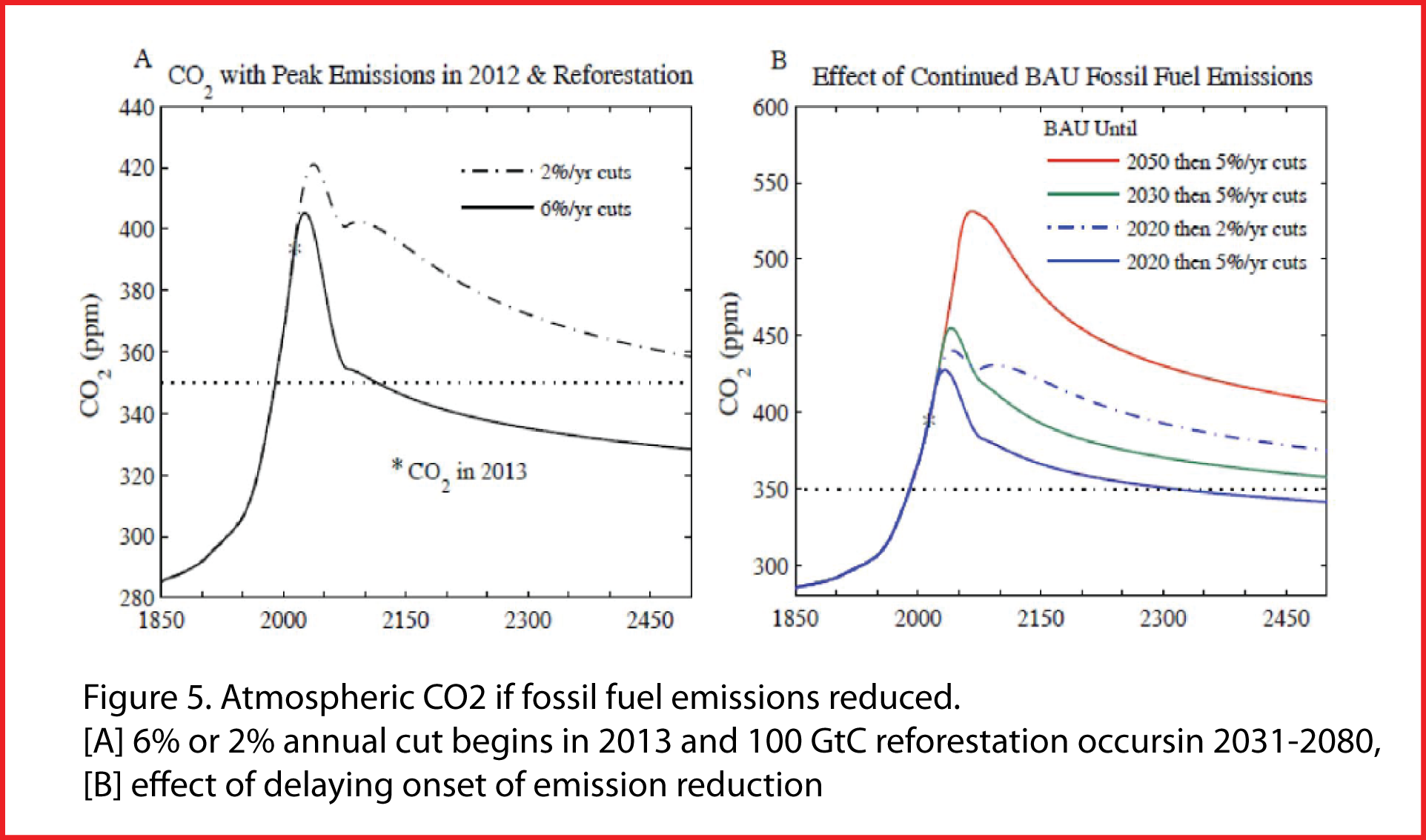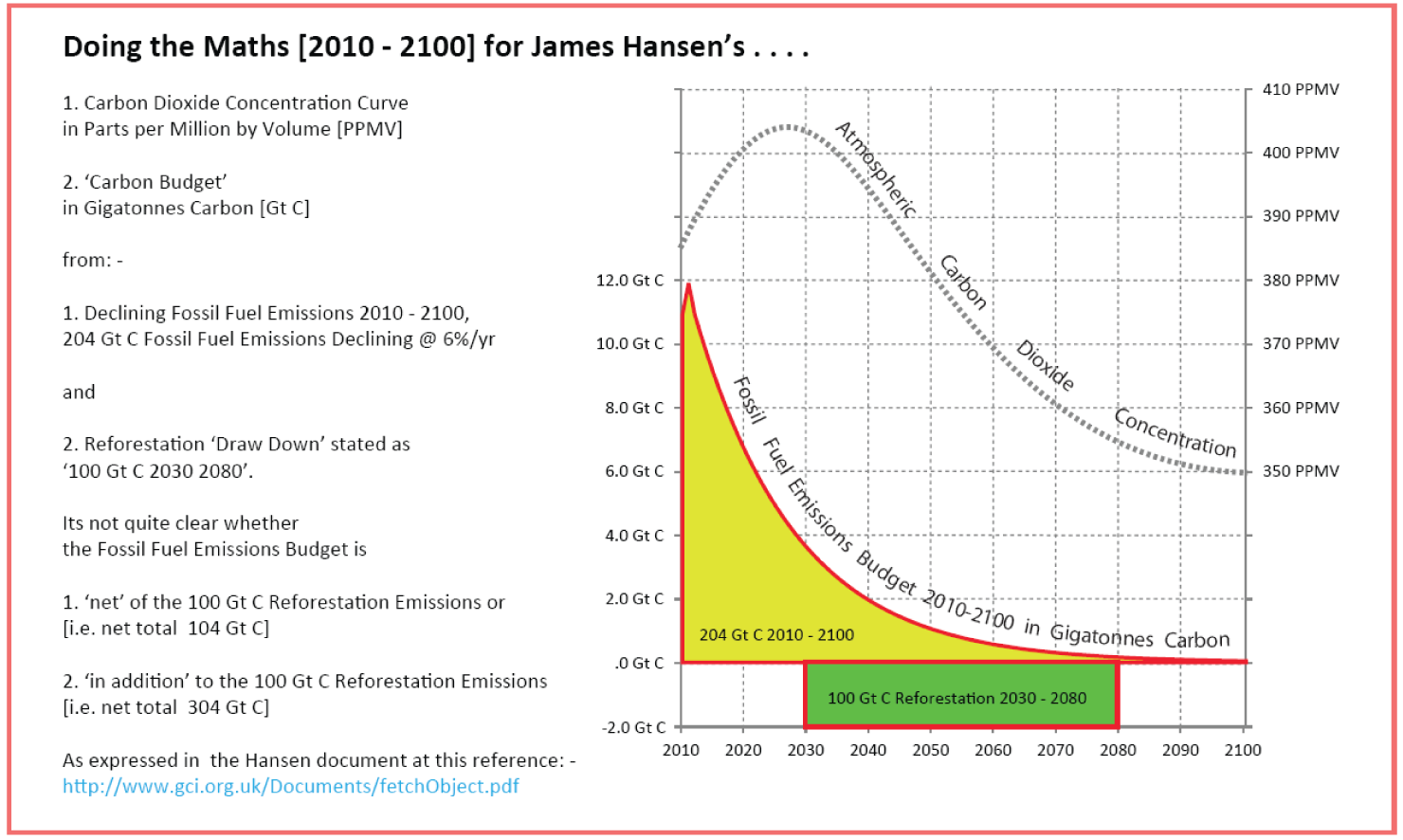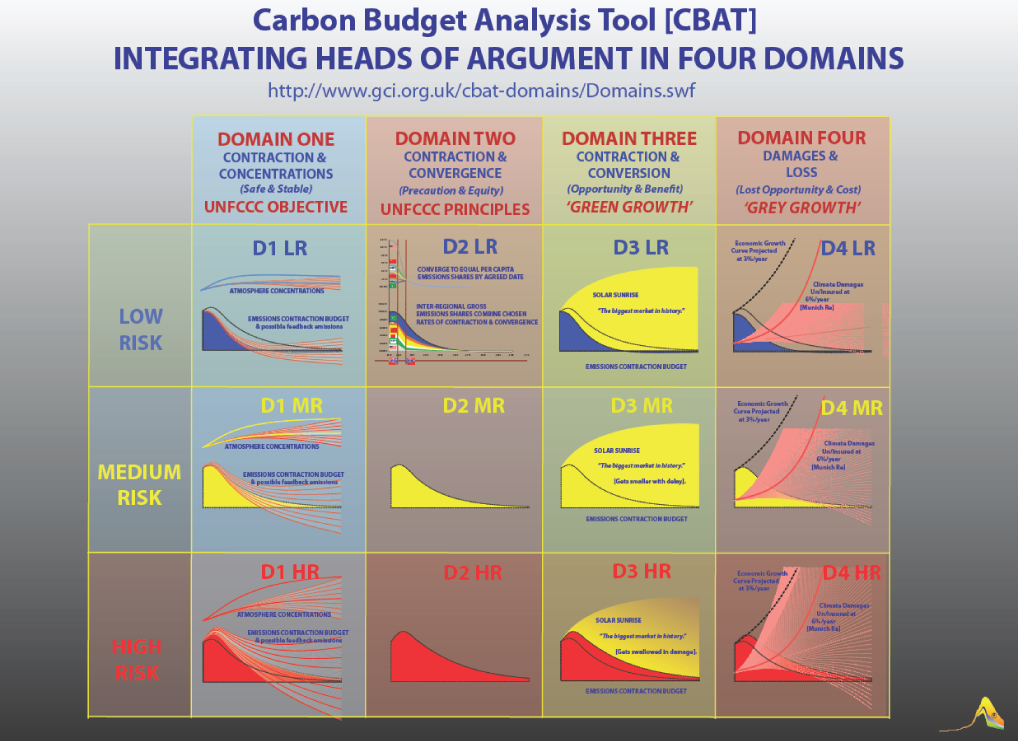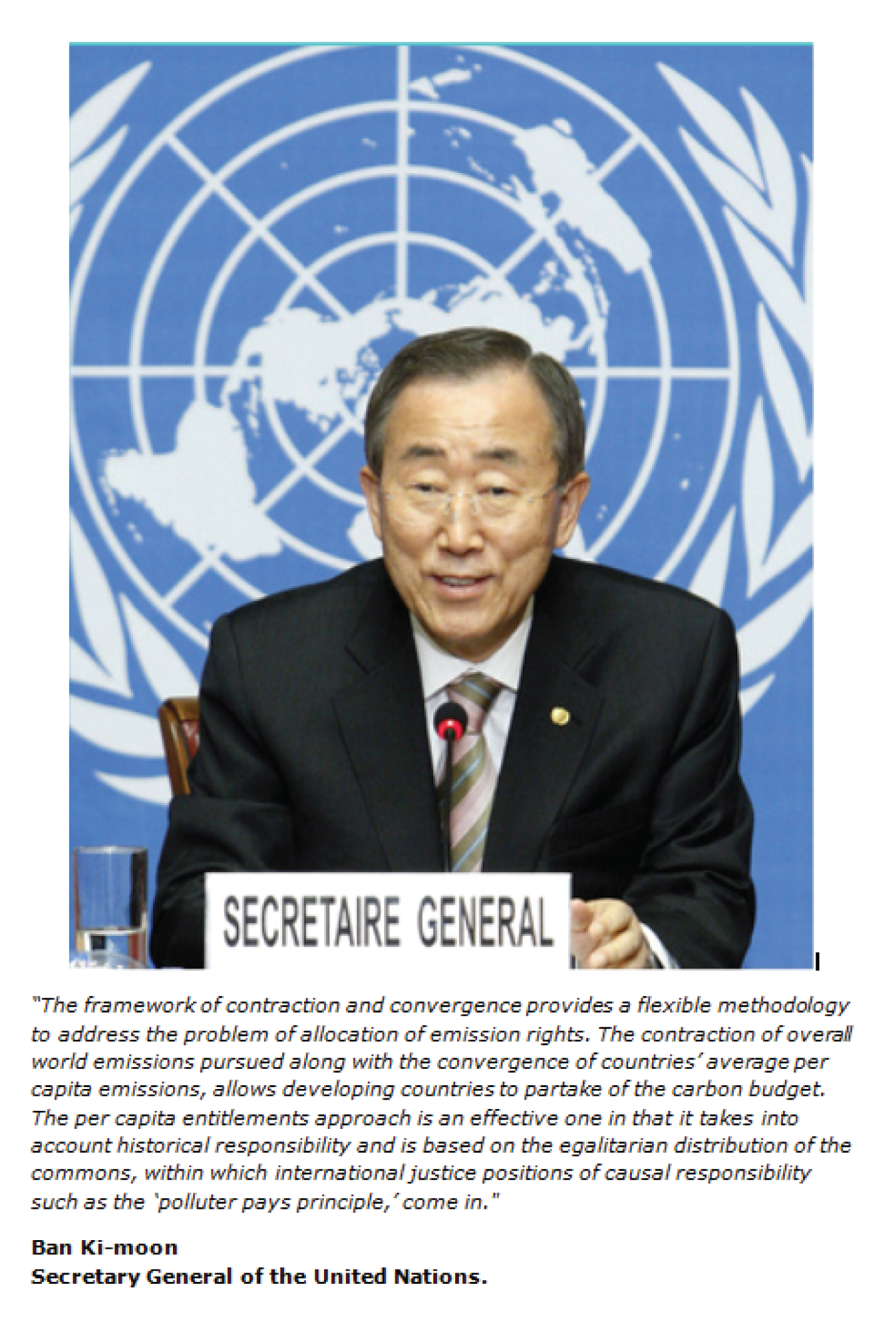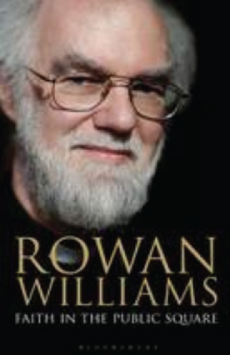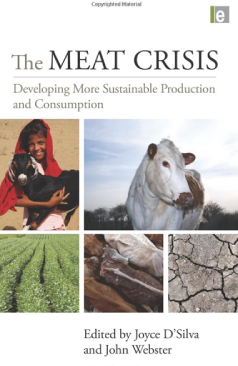 CBAT
CBAT NEWS
NEWS
30 January 2014 - "What is the 'carbon-price' of a 'Low Carbon Economy" Ask Jo-ordinary or an All-Party Parliamentary expert . . . ?29 January 2014 - "Woefully inadequate." Visualizing US GHG Commitments (Part II). D Brown Widener, Pennsylvania USA.
This is the second entry which helps explain why US state ghg targets are woefully inadequate in light of the most recent science.
The first entry included two charts provided by the Global Commons Institute.
The following chart also prepared by the Global Commons Institute also shows what US states would need to do to reduce ghg emissions by 80 %, a level which is still woefully inadequate in light of the most recent science as we explained in the last entry hear.
This chart is available for closer inspection here - See moreSee more
26 January 2014 - "C&C - There is overwhelming support." Rabbi Jeffrey Newmans' Blog
GCI has promoted a scientifically based policy approach, Contraction & Convergence [C&C] since 1995.
"There is overwhelming support." See his full blog comment here.
Rabbi Jeffrey Newman is an Earth Charter UK Affiliate.
He is also a prominent voice in the collected inter-faith C&C support here
He also points to a very helpful series of intros on C&C to be found on Laurie Barlow’s blog here
26 January 2014 - "Woefully inadequate." Visualizing US GHG Commitments. D Brown Widener Law School, Pennsylvania USA.
Visuallizing Why US National and US State Governments’ GHG Reductions Commitments
Are Now Woefully Inadequate in Light Of Recent Science.Several charts produced by the Global Commons Institute vividly demonstrate the woeful inadequacy of both the US federal government’s and US states’ commitments on climate change in light of the most recent climate change science. These charts are extremely important because there is virtually no discussion in the US press of the utter and undeniable inadequacy of commitments on climate change made by the US federal and state governments. These charts help visualize complex information that is not well understood by the vast majority of US citizens, yet these facts must be understood to comprehend the utter inadequacy of the US federal government and US state governments response to climate change. Thus, these charts help explain both why the US commitment to reduce its ghg emissions by 17% below 2005 as well as targets that have been set by even those US states who have shown some leadership on climate change must now be understood as utterly inadequate in light of the most recent climate change science. See more
See more
25 January 2014 - “Catch-up must be replaced by Contraction & Convergence.” Sustainability, Lewis Akenji & Magnus Bengtsson
The current development paradigm is mainly based on the idea of 'catching up', meaning that low-income countries are assumed to gradually approach the levels of wealth and material standard enjoyed by industrialized countries. The rich countries are basically assumed to continue on a business-as-usual track, getting increasingly affluent, while making efforts to decouple.This idea might have been viable in the past, but this is no longer the case. On a crowded planet with a rapidly degrading resource base, the 'catching up' model of development needs to be replaced with a new vision of 'contraction and convergence'.
This vision is based on the following two principles: -
- Reduced levels of consumption by developed countries. For the SDGs to be seen as applicable to all, industrialized countries need to, while ensuring the wellbeing of their citizens, commit to reducing their level of material consumption. This is as much desired as it is imperative in order to give the Post-2015 Development Agenda fairness and legitimacy.
- Increased quality of consumption by developing countries. Poverty is unsustainable; developing countries need to increase the level of consumption of low-income groups, especially of basic necessities, to at least meet minimum requirements for health and dignity, while adopting the most sustainable methods available to avoid causing the same levels of ecological harm as has been seen with developed countries.
23 January 2014 - C&C support from various sectors - UN, Multi-Faith, Polical, Medical Professionals - published at ISSUU19 January 2014 - Wolfram Demonstration Project 'Phyllotaxis' - Start with Golden Angle of Divergence 0.618 (137.5 degreees)Phyllotaxis Explained from the Wolfram Demonstrations Project by Claude Fabre
18 January 2014 - "Hanna Arendt: Radical Evil, Radical Hope" Luminous essay by Rabbi Jeffrey Newman European Judaism (f/c).
HANNAH ARENDT: RADICAL EVIL, RADICAL HOPE
Jeffrey Newman"The world is facing a multitude of interconnected issues, leading to avoidable starvation, poverty and death for hundreds of millions. Is Arendt’s concept of the ‘banality of evil’, which she adopted in preference to Kant’s ‘radical evil’, applicable here? Are we bystanders, addicted to ‘growth’? The paper considers the central role of thinking and, with the help of Greek myth and Nietzsche, the relationship between evil and hope. Finally, there is an emerging concept of ‘radical hope’. What is this, could it be of help and how would it connect with Judaism’s teachings of the Messiah?"
This truly remarkable essay will be published in Spring under this cover.18 January 2014 - Tracking Funding Of Ethically Abhorrent Climate Disinformation Campaign Now Impossible Don Brown
New Study Concludes That Tracking Funding Of The Ethically Abhorrent Climate Disinformation Campaign Is Now Impossible.
A new peer-reviewed study by Dr. Robert Brulle from Drexel University documents how the funding of the climate change disinformation campaign has shifted in the last few years from corporations and some politically conservative foundations to pass-through 501(c) (3) foundations like Donors Trust and Donors Capital, whose funders cannot be traced.
Ethics and Climate Change has explained in great detail in 13 separate articles available in the Start Here and Index tab on this site under “Disinformation Campaign and Climate Ethics” why the climate change disinformation campaign is ethically abhorrent, and, in fact, is some new kind of crime or assault against humanity, gross human rights violation, or other kind of villainy. This is so, as explained in these articles, because although skepticism in science should be encouraged, the climate change disinformation campaign has engaged in tactics which can’t be understood as responsible skepticism. These tactics have included: (1) lying or reckless disregard for the truth about mainstream climate change science, (2) cherry-picking climate science, (3) making specious claims about “bad” science, (4) focusing on what is unknown while ignoring what is not in dispute about climate change science, (5) using think tanks, front groups, and AstroTurf organizations to hide the real parties in interest, (6) manufacturing bogus science in conferences or publishing in non peer-reviewed journals, (7) hiring public relations firms to convince citizens that there is no basis for mainstream scientific conclusions about climate change, and (8) cyber-bullying climate scientists and journalists. These tactics are not responsible skepticism but morally abhorrent misinformation.
The new study reviews the sociological literature on the climate change disinformation campaign while examining what is known about funding for this phenomenon. Major conclusions of the study include:
- Conservative foundations have bank-rolled denial. The largest and most consistent funders of organizations orchestrating climate change denial are a number of well-known conservative foundations, such as the Searle Freedom Trust, the John William Pope Foundation, the Howard Charitable Foundation and the Sarah Scaife Foundation. These foundations promote ultra-free-market ideas in many realms.
- Koch and ExxonMobil have recently pulled back from publicly visible funding. From 2003 to 2007, the Koch Affiliated Foundations and the ExxonMobil Foundation were heavily involved in funding climate-change denial organizations. But since 2008, they are no longer making publicly traceable contributions.
- Funding has shifted to pass through untraceable sources. Coinciding with the decline in traceable funding, the amount of funding given to denial organizations by the Donors Trust has risen dramatically. Donors Trust is a donor-directed foundation whose funders cannot be traced. This one foundation now provides about 25% of all traceable foundation funding used by organizations engaged in promoting systematic denial of climate change.
- Most funding for denial efforts is untraceable. Despite extensive data compilation and analyses, only a fraction of the hundreds of millions in contributions to climate change denying organizations can be specifically accounted for from public records. Approximately 75% of the income of these organizations comes from unidentifiable sources..
The new study also concludes that the climate change disinformation campaign is what is known in the sociological literature as a “counter-movement.” Social movements such as that which has arisen to reduce the threat of climate change are often opposed by a “counter-movement” which seeks to undermine the goals of the social movement. Social movements usually seek to frame public policy issues as matters requiring government action while counter-movements work to frame the issue in the mind of the public to undermine the case for government action. This creates cultural contests over the appropriate frame for the public advocated by social movements and counter-movements.
Counter-movements are “networks of individuals and organizations that share many of the same objects of concern as the social movements that they oppose. They make competing claims on the state on matters of policy and politics and vie for attention from the mass media and the broader public. Counter-movements seek to maintain the currently dominant frame and thus maintain the status quo by opposing, or countering, the efforts of movements seeking change. Significantly, counter-movements typically originate as the social change movement starts to show signs of success in influencing public policy, and threatening established interests. These counter-movements typically represent economic interests directly challenged by the emergent social movement.”
According to Brulle, the climate change disinformation campaign is a well-funded and organized counter-movement effort to undermine public faith in climate science and block action by the U.S. government to regulate emissions. This counter-movement involves a large number of organizations, including conservative think tanks, advocacy groups, trade associations and conservative foundations, with strong links to sympathetic media outlets and conservative politicians.
The new study also identifies the level of funding to the major organizations engaged in the climate change disinformation campaign and the amount of funding being provided to these organizations. The study ranks these organizations as follows with funding amounts in millions:
- American Enterprise Institute for Public Policy Research, $86.7, 16%
- Heritage Foundation, $76.4, 14%
- Hoover Institution on War, Revolution and Peace, $45.4, 8%
- Manhattan Institute Policy Research, $33.1, 6%
- Cato Institute, $30.6, 5%
- Hudson Institute, $25.5, 5%
- Altas Economic Research Foundation, $24.5, 4%
- Americans for Prosperity Foundation, $22.7, 4%
- John Locke Foundation, $18.0, 3%
- Heartland Institute, $16.7, 3%
- Reason Foundation, $15.0, 3%
- Media Research Center, $14.5, 3%
- Mercatus Center, $14.3, 3%
- National Center for Policy Analysis, $13.9, 3%
- Competitive Enterprise Institute, $12.5, 2%
- State Policy Network, $12.0, 2%
- Pacific Research Institute for Public Policy, $11.4, 2%
- Independent Womens Forum, $7.4, 1%
- Landmark Legal Foundation, $7.0, 1%
- FreedomWorks Foundation, $5.3, 1%
- 49 Other Organizations < 1%, $63.7, 11%
The new report also identifies foundation funding source of these organizations and ranks them as follows in millions:
- Donor Trust/Donors Capital Fund, $78.8, 14%
- Scaife Affiliated Foundations, $39.6, 7%
- The Lynde and Harry Bradley Foundation, $29.6, 5%
- Koch Affiliated Foundations, $26.3, 5%
- Howard Charitable Foundation, $24.8, 4%
- John William Pope Foundation, $21.9, 4%
- Searle Freedom Trust, $21.7, 4%
- John Templeton Foundation, $20.2, 4%
- Dunn’s Foundation for the Advancement of Right Thinking, $13.7, 2%
- Smith Richarson Foundation, Inc., $13.5, 2%
- Vanguard Charitable Endowment Program, $13.1, 2%
- The Kovner Foundation, $12.8, 2%
- Annenberg Foundation, $11.3, 2%
- Lily Endowment Inc., $10.3, 2%
- The Richard and Helen DeVos Foundation, $10.0, 2%
- ExxonMobil Foundation, $7.2, 1%
- Brady Education Foundation, $6.8, 1%
- The Samuel Roberts Foundation, Inc., $6.7, 1%
- Coors Affiliated Foundations, $6.2, 1%
- Lakeside Foundation, $5.8, 1%
- Herrick Foundation, $5.7, 1%
- 118 Others < 1%, $170.4, 31%
Because much of the funding for the climate change disinformation campaign has shifted to organizations that prevent tracing the actual donors who are receiving a tax deduction for their contributions, a case can be made that tax payers are paying for the disinformation campaign. The new funding scheme also prevents citizens from knowing where the funding is coming from, facts which are necessary to understand who the parties in interest are behind the counter-movement. Because the tactics of the disinformation are so ethically reprehensible, the new funding scheme most likely shields large funders from public scrutiny that would reveal ethically abhorrent behavior.
By:
Donald A. Brown
Scholar In Residence and Professor, Sustainability Ethics and Law
Widener University School Of Law
Part-time Professor, Nanjing University School of Information Science and Technology, Nanjing, China
dabrown57@gmail.com
18 January 2014 - "God they love this man! (me too)." Nikolai Znaider plays Brahms Violin Concerto w Budpaest Festival Orchestra
17 January 2014 - "New ways? C&C, the best known option." Introduction to International Environmental Law Timo Koivurova
New ways of containing climate change
Could new ways be found to contain and resolve climate change? From the political-legal angle the best known option is the so-called Contraction and Convergence model presented by the Global Commons Institute.
The basic idea is that states should first agree what constitutes safe levels of greenhouse gases. Once this is settled, emission rights are divided between states according to what their per capita emissions are. This would mean that developing countries with their low per capita emissions would receive high emissions rights. This in turn results in convergence: as the developing nations would receive much higher emissions rights they would be able to develop economically, but at the same time their per capita greenhouse emissions would increase and they would have to start limiting their emissions. Meanwhile the industrialised nations would receive much lower emissions rights and would therefore be under pressure to reduce their per capita emissions from the outset. Sooner or later, the per capita emissions rights of states would reach the same level globally and the total emissions would remain below the agreed safe levels.
Introduction to International Environmental Law
Timo Koivurova17 January 2013 - "The 'Catching-Up' model must be replaced with C&C." Kristof Decoster, International Health Policies AntwerpIHP news 254: Davos or Geneva, is that the question?
By Kristof Decoster · On January 17, 2014The ‘catching up’ model of development needs to be replaced with a new vision of contraction and convergence.
The Lancet Global Health 2035 agenda still mainly emphasizes the latter (convergence is possible), I have the feeling, not the former (contraction will be necessary in rich countries and some of the richer parts of emerging countries).
(Some BMJ articles from 2012 were an exception to this rule, although they interpret ‘contraction & convergence’ in a slightly different way; perhaps the new Lancet Commission on Emergency Actions to Protect Human Health will also change gear, we’ll see). -
See more
Decoster, Kristof Kristof Decoster, MA (political science), has been working at ITM’s Public Health Department since October 2007. He’s the editor of the weekly IHP newsletter and involved in the Emerging Voices project that aims to bridge the gap between people in the South and the international health scene. Before joining ITM, he worked at the University of Antwerp in the field of political sociology (1997-2001), mainly on the concept of social capital in a European context. In the early 2000s he traveled extensively in Latin America and Asia, and also worked a few years (2004-2007) as an English teacher in Chengdu, China. -
17 January 2013 - "C&C is a very powerful idea & we are moving remorselessly towards it" Michael Meacher DEFRA Minister 2001/3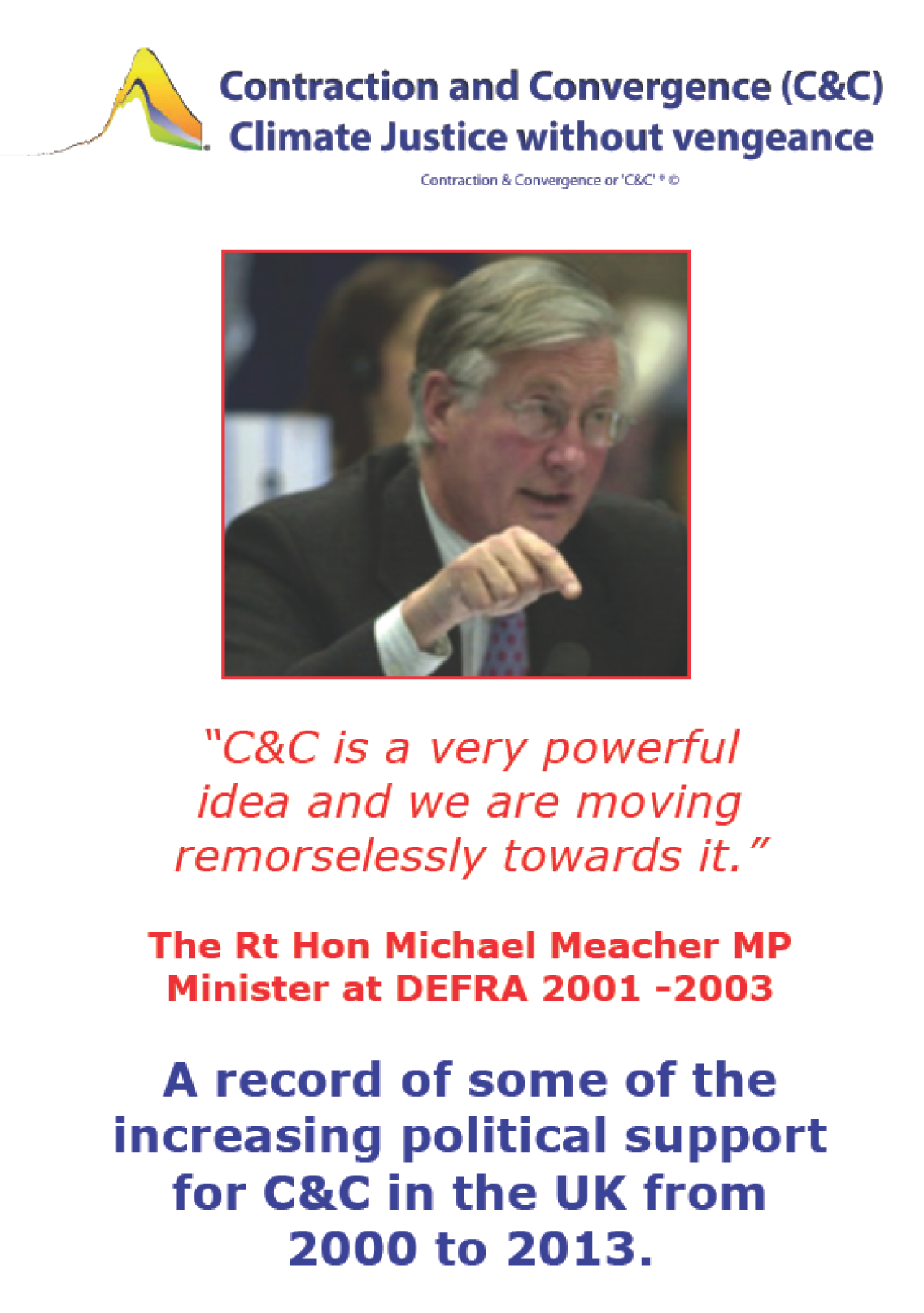
“C&C is a very powerful idea & we are moving remorselessly towards it.”
Since 1989 the Global Commons Institute (GCI) has been successfully challenging officials around the world including politicians like myself to adopt. Their contribution to the policy debate on how to avoid dangerous climate change has been sustained and outstanding.
‘Contraction & Convergence’ (C&C) is GCI’s global framework for climate change policies based on precaution, logic and equity. With scant material support and an extraordinary dedication and persistence, GCI has created and communicated this visionary concept for a long-term global framework for negotiating the international allocation of greenhouse gas emissions permits.
GCI has already convinced numerous leading figures in the international negotiating community, the insurance industry, the scientific community, the environmental media and politics of the absence of effective alternatives to C&C. So much so that in June 2000, the UK’s Royal Commission on Environmental Pollution made it a key recommendation to this government.
The concept has been endorsed by the European Parliament and many members of the UK parliament as well, including the former Secretary of State for the Environment, John Gummer and Ministers from practically all European countries.
Under GCI’s advice the concept was led at the UN negotiations by the Indian Government in 1995 and again by the Africa Group of Nations in 1997. Again as a result of GCI publications, C&C has also been endorsed by numerous eminent individuals and institutions and is more and more widely quoted in prestigious academic publications.
Lest we make the planet uninhabitable, the international community must come soon to an agreement on how to organise the global effort to avoid this.
C&C is a very powerful idea. If ever there was an initiative that deserved recognition and support, it is the brilliant and relentless campaign waged by this fiercely independent, creative and apparently quite tireless organisation.
The Rt Hon Michael Meacher
Minister at Department of Food and Rural Affairs DEFRA 2001 - 200316 January 2014 - "C&C is a return to the principles of the original UNFCCC." Politics & the Environment Connelly, Smith et al.
The Global Commons Institute has developed a plan Contraction and Convergence: contraction of overall emissions and convergence of Northern and Southern emissions. The proposal is in many ways a return to and development of the principles of the original UNFCCC is built on the recognition of differential responsibility and embraces two principles: first that every person in the world should have (in the long run) an equal emission quota; and second, that all emissions quotas would be marketable – but only within a stringent global emissions limit. In other words, global tradable permits are proposed, but not as a way of relieving individual countries of their responsibilities. Rich countries who wish to to continue with more than their share will have to pay for the privilege, thereby generating resources for countries who need them. The C&C approach counters the US approach which has rejected stringent emissions limits and opposed the adoption of per capita emissions quotas. It has been adopted as a policy goal by India China and many African countries; although it is not yet official policy it has been approved by the Parliament (Layton 2001).
Politics and the Environment: From Theory to Practice (Second Edition)
James Connelly, Graham Smith, Claire Saunders and David Benson
15 January 2014 - "C&C was first introduced by GCI in 1990." Mark Malik Aslam Options for Protecting the Climate WRI
This scheme was first introduced by the nongovernmental Global Commons Institute (GCI) in 19905 and has been refined further into what is popularly termed “contraction and convergence.” The approach has been consistently advocated at the sidelines of climate politics
and, over the years, has received increasing support from some NGOs and governments.6 However, to date, it has not been successful in breaking into mainstream climate negotiations.
GCI’s approach starts off by defining a tolerable level of climate change based on the scientific assessments of the Intergovernmental Panel on Climate Change (IPCC), which could be adjusted in the future to respond to improved scientific information. Based on such an ecologically
sustainable target, a yearly global carbon budget is devised, which “contracts” gradually over time. This contraction continues toward a level where the per capita emission levels of participating countries “converge” toward an equal level. Thus, convergence claims to allocate shares of the budget to the emitting nations on an equitable basis (GCI 1999), whereby the per capita entitlements of the developed countries decrease while those of most developing countries increase. After reaching convergence, all countries would contract their emission entitlements equally until the requisite global emissions budget is reached. According to GCI, it is not possible to tackle the climate issue without adhering to these two key elements— contraction (environmental integrity) and convergence (equal per capita entitlements) (Meyer 2000).21 January 2014 - Dr Mayer Hillman Policy Studies Institute adds his views to the Carbon Budget Accounting Tool (CBAT) page.
BACK TO CBAT Graphic User Interface [GUI]

BACK TO ALL INFO POINTS DOMAIN 1
Dr Mayer Hillman
Senionr Fellow Emeritus Policy Studies InstituteThe complementary roles of the Global Commons Institute’s
Contraction & Convergence framework & Carbon Accounting Budget ToolThe time for equivocation should be long over. International agreement has to be speedily reached on the weight of the global carbon budget remaining if we are not to breach the ceiling of no more than a 2 degree C rise in the global temperature – now generally considered to be the level above which the rise cannot be reversed. The longer the delay in attempting to avoid this situation, the greater is the likelihood that that will not be possible.
Determination of that budget should obviously precede, not follow, discussion of such current issues as:
whether democratic governments around the world are right in seeing one of their main functions as, within reason, treating public demand as a given to be met as efficiently, cost-effectively and in the least environmentally-damaging way as is now possible;
justification of the use of nuclear power instead of fossil fuels in electricity generation;
the extraction of gas by ‘fracking’ to ease the transition from coal to total dependence on renewable sources of energy;
the extent to which individuals can be encouraged to reach decisions that take account of their adverse consequences, such as travelling long distances or having a large family.
The need for consensus on the budget is rendered all the more urgent given the more than four-fold difference in the calculated weight and rates of carbon budgets put forward by the climate scientists considered to be among the most eminent in their field – for instance, the central budget of the UK 2008 Climate Act, [395 Gt C], that in last autumn’s Inter-governmental Panel on Climate Change (IPCC) report [250 GtC] and that of James Hansen [170 GtC] where the ceiling is no more than a rise of 1.5 degrees C. Yet, remarkably, the UK Government rejects the call for it to revise its dates and targets for the reduction in emissions set down in its Act.
Concern should be growing internationally about the lack of agreement on the budget. There can be little doubt that, at such a critical time in our history, scientifically-based rather than politically-based decisions affecting the future must be taken. This is especially true as the scale of the societal changes needed is so challenging, and certainly as further delay in responding to this can only result in reducing the time available for reason to prevail and effective action to be taken.
Equally remarkably, is the fact that international Governments represented at the last two UN Conference of the Parties (COP) meetings appear to be content with the proposition that the next major step to be taken in negotiations aimed at reaching decisions to avoid ecological catastrophe is an undertaking that, at the Paris COP in 2015, each country will come to the table with a figure on the contribution in terms of carbon reductions that is prepared to make!
In the late 1980s, Aubrey Meyer, at the time an accomplished violinist and composer, was attracted to writing an opera based on the life and murder of Chico Mendes, a Brazilian who devoted what proved to be his last years to trying to protect the tropical rainforests from destruction by developers. In exploring themes for the opera, he was inevitably drawn to the role of rainforests in changing the climate and to understanding related ecological issues.
In 1990, Meyer co-founded the Global Commons Institute (GCI) and, since then, has been the prime source of the Institute’s activities and campaigning. He has seen its role as providing a rational response to the challenge laid down in the objective and principles of the United Nations Framework Convention on Climate Change (UNFCC).
To that end, he has worked on the development of the concept of Contraction and Convergence (C&C) based on the principle of ‘Equity and Survival’, repeatedly arguing that the measure of any strategy aimed at limiting the damage of climate change must ab initio have a numerate framework and that, in its absence, the way forward cannot be adequately devised. The C&C concept is explained in one of the Schumacher Briefings [Green Books, 1998].
Recognition of Meyer as one of the most influential persons in this crucial area of international and national policy is reflected in the impressive number of awards he has received.
Most recently, Meyer has turned his attention to taking the concept of C&C to a stage allowing for evaluation of any strategy with a stated global carbon budget and of revealing its outcomes. He has logically given it the title of a Carbon Budget Accounting Tool (CBAT).Its primary components are the concentration of carbon dioxide and methane in the atmosphere, the temperature, the sea-level rise, ocean acidity, and crucially the regional, national and per capita shares of the budget in any year up to the year at which the ceiling will be reached. Four domains are covered in the model:
Contraction and Concentrations;
Contraction and Convergence;
Contraction and Conversion; and
Damages and growth.
Anyone applying the tool will recognise it as a brilliant device enabling climate scientists and policy makers to come face-to-face with the consequences in respect of these components. It is also extremely user-friendly. As far as I am aware, no one else has proposed an equivalent tool, let alone one that can be seen to be preferable to CBAT. Once a carbon budget is set, the application of this model will point the way to focusing the strategic debate on how the sharing of the budget is to be negotiated internationally. It allows implementation of transition measures to evolve, subject to the limit for compliance with the objective of the UNFCCC.
This then leaves two options open to those seriously concerned about the world’s predicament in relation to the rate of progress in climate change negotiations and the current failure to act decisively on it. Either CBAT is accepted and applied as soon as possible, or it is rejected.
If we are to avoid further procrastination, as seems unlikely, the latter option logically points to an obligation on those objecting to it to provide a justification for doing so, together with a proposal in favour of what they consider to be a better alternative. This can then be comparably evaluated. Failure to adopt either option can only be interpreted as an indication of acceptance of the policies being pursued at present as the best in the circumstances.
BACK TO CBAT Graphic User Interface [GUI]
14 January 2013 - Sizing/Sharing 250 Gt Carbon Budget for 2 Degrees 2010 - 2053/2040/2030
Short movie empahsizing that if we take this budget seriously, we are now seriously on the clock to achieve it.
13 January 2014 - View from Maggie's garden backdrop to Eliza Dolittle getting tough on UN climate negotiations . . .12 January 2013 - "We have to realize absolute decoupling. A C&C Scheme is needed." Joint input from European NGOs on OWG-7The SCP agenda has to be equitable and fair for all, and should lead to a fair distribution of the use of natural resources around the world. For this to be achieved, some regions and sectors have to decrease drastically the use of resources, so that other regions/sectors can grow.
A Contraction and Convergence scheme is needed. We have to use methods of capping the use of resources and energy, and realize absolute decoupling. Further, the economy needs to be adjusted in a way that fits into the planetary boundaries. We propose to work on tools how to implement this and use the knowledge of UNEP’s International Resource Panel.
12 January 2014 - C&C at Forum on Religion and Ecology YALE University
ETHICAL CONSIDERATIONS IN REDUCING GLOBAL GREENHOUSE GAS EMISSIONS
“Acknowledging the global nature of climate change calls for the widest possible cooperation by all countries and their participation in an effective and appropriate international response in accordance with their common but differentiated responsibilities and respective capabilities.”
So states the Preamble to the United Nations Framework Convention on Climate Change (UNFCCC)http://unfccc.int/essential_background/items/2877.php, the international treaty ratified by 192 countries since its introduction in 1992, which led to the Kyoto Protocolhttp://unfccc.int/kyoto_protocol/items/2830.php, ratified by 184 countries (but not the United States) since 1997. The Kyoto Protocol expires in 2012, and the international community is struggling to create a new global agreement to replace it at the December 2009 UN climate change conference in Copenhagen in order to give nations time to ratify it before 2012.
The ethical interpretations of the preamble phrase, “common but differentiated responsibilities and respective capabilities,” are central to the current impasse in the global climate change negotiations.
Industrialized countries must drastically reduce their emissions and provide finance and technology to assist reduction of emissions in developing countries. Developing countries insist that a solution to climate change cannot come at the expense of their development. Reductions of greenhouse gas emissions in developing nations, primarily in the southern hemisphere, are also necessary, but economic growth and poverty alleviation are inexorably linked to lack of access to energy services – and, consequently, a seemingly inevitable increase in fossil fuel use and thus carbon emissions.
Several frameworks for reducing global greenhouse gas emissions to combat climate change are under consideration. Two of the most promising are “Contraction & Convergence” and “Greenhouse Development Rights.” Both are potentially feasible approaches, and both stress equity, development, mitigation, and adaptation.
Contraction and Convergence
The basic ethical principle of Contraction & Convergence is “equal per capita emission allocation.” It reduces global greenhouse gas emissions so that atmospheric concentrations become stabilized at an agreed safe level (contraction) and distributes the permissible emissions under the contraction on an equal per capita basis globally for all countries (convergence).
For more information on Contraction & Convergence: http://www.gci.org.uk/
To run or download a presentation on Contraction & Convergence:
http://www.gci.org.uk/images/CC_Demo(pc).exe
09 January 2014 - The Vatican & Pope Francis are connected to an extensive inter-faith network of support for C&C07 January 2014 - "C&C is a very proper proposition." Future Energies
"As we have a tremendous environmental crisis at hand, contraction and convergence (C&C) is a very proper proposition. Lowering our greenhouse gas emissions is a good step towards a more liveable planet. Also, having the nations work in unison will help us become more united over this issue as a planet, and less divided among nations.
C&C will allow all countries a reasonable way to achieve low emissions by establishing entitlements or rewards for meeting target emission standards. This allows countries to continue to emit emissions as long as they are meeting goals set by a world governing standard. Another benefit from this solution will help poverty stricken nations become better economies through those standards."Gordon Foat
Green Motor Sport took C&C as postered on their ace electric race-car for a competion in Abu Dhabi.
Not quite sure of the details, but somewhere a Guiness Book of Records resulted from this event.Well done GMS!
06 January 2014 - "Bells Lillies and Clouds without Rain." For Francesco, the new Pope & Maggie's 'Garden of Hope.'
"God has joined us so closely to the world around us that we can feel
the desertification of the soil almost a physical ailment." (Francesco)."Let us not leave in our wake a swatch of destruction and death which
will affect our own lives & those of future generations." (Francesco).06 January 2013 - "C&C the simplest formula, is attracting support around the world." With Speed & Violence Fred Pearce
Big developing nations like China and India may have high national emissions. But measured in ratio to population, their emissions remain low. While the U.S. and Australia emit around 5.5 tons of carbon a year for every citizen, and European countries average around 3 tons, China is still around 1 ton, and India below half a ton. Developing countries feel they are being asked to forego economic development to help clean up a mess they did not create. On the other hand, they increasingly see that climate change threatens their prospects for economic development. The only solution is to institute a rationing system for pollution entitlements, based on a shared view of fairness.Perhaps the simplest blueprint is "contraction and convergence." Developed by a small British group called the Global Commons Institute, it is attracting support around the world. The contraction half of the formula would establish a rolling program of annual targets for global emissions. The targets would begin roughly where we are today, and would fall over the coming decades. They would be set so as to ensure that the atmosphere never passed whatever limit on carbon dioxide concentrations the world chose.
The convergence half of the formula would share out those allowable global emissions each year according to population size. So national targets might begin at about 1 ton of carbon per person and then fall to maybe half a ton by 2050 and to that much less again by 2 100, depending on the global target chosen. Of course, at the start that would leave rich nations with too few permits and many poor nations with more than they needed. So they would trade. The costs of buying and selling pollution licenses would be a powerful incentive for a global cleanup.
Fantasy politics? Maybe. But something on this scale will be needed if we are to prevent climatic disaster. And if the rich world wants the poor world to help clean up its mess, and save us all from dangerous climate change, then some such formula will be needed.
06 January 2014 - "Tilted Windmills" A little musical story about how Don Quixote so loved Dulcinea [he went kerplunck] . . . .05 January 2013 - Here's what the 2014 Climate Action Report United States of America says about US CO2 emissions to 2020Carbon Dioxide Emissions
CO2 emissions are expected to decline by 7.6 percent between 2005 and 2020. Between 2005 and 2011, emissions declined by 8.1 percent, but they are projected to increase slightly between 2011 and 2020. Energy-related CO2 is projected to decline slightly over this time
period, while non-energy CO2 emissions (e.g., process emissions) are expected to grow between 2011 and 2020.
Projected energy-related CO2 emissions in 2020 are 8.8 percent below their 2005 level, totaling 5,243 Tg CO2 in 2020, assuming current policies persist. On average, energy-related CO2 emissions decline by 0.6 percent per year from 2005 to 2020, compared with an average
increase of 1.2 percent per year from 1990 to 2005. Reasons for the decline include growing use of renewable technologies and fuels; automobile efficiency improvements; slower growth in electricity demand; increased use of natural gas, which is less carbon-intensive than
other fossil fuels; and an expected slow and extended recovery from the recession of 2007– 2009 (U.S. DOE/EIA 2013b).
Non-energy-related CO2 emissions are projected to increase by 12.3 percent between 2005 and 2020. Although these emissions declined between 2005 and 2011, growth in four emission sources results in overall growth: use of fossil fuels for non-energy uses (such as liquefied
petroleum gas feedstock, natural gas feedstock, petrochemical feedstock, and asphalt and road oil); iron and steel production; natural gas systems; and cement production.
2014 UNITED STATES CLIMATE ACTION REPORT 2014
First Biennial Report of the United States of America
Sixth National Communication of the United States of America
Under the United Nations Framework Convention on Climate Change
05 January 2013 - "C&C approach could contribute to greater well-being in LCD's." Prof Kyle W Knight, Population & Environment
Abstract
This study assesses the degree to which the relationship between the environmental demands of countries (measured as ecological footprint per capita) and wellbeing (measured as life expectancy) has changed over the last several decades (1961–2007) and whether the nature and extent of these changes differ between developed and less-developed countries. Pooled ordinary least squares regression results indicate that decoupling has occurred among developed countries,where the relationship between ecological footprint and life expectancy weakened substantially over time, becoming negative in later years. In less-developed countries, the relationship has intensified substantially, with the effect of ecological footprint on life expectancy becoming stronger over time. Fixed-effects regression results provide similar results for developed countries but indicate slight decoupling between increases in ecological footprint and life expectancy among less-developed countries. The implications of these results are discussed in the context of contraction and convergence approaches to sustainability.. . . . .
These patterns bring to fore issues of environmental limits and global equity which underlay a growing body ofwork that argues for the necessity of reduced consumption in the globalNorth in order to achieve sustainability (e.g.,Martinez-Alier 2009). Sachs and Santarius (2007) argue that because no country has a right to a disproportionate share of global environmental resources and ecosystems, the only fair and just distribution of resources is one in which each countrymakes demands on the global environment at the same per capita level determined by global ecological limits. This ‘‘contraction and convergence’’ approach to sustainability requires that developed countries reduce (i.e., contract) their environmental demands while allowing for LDCs to increase theirs so the two converge at an equitable level. Contraction and convergence was first promoted in the context of carbon emissions and climate change by the Global Commons Institute (GCI) in the early 1990s (see GCI 2003). Since then, the focus of this approach has been expanded from carbon emissions to environmental demands in general; Kitzes et al. (2008) describe this expanded approach as ‘‘shrink and share.’’
. . . . .
Conclusion
These results have significant implications for contraction and convergence (or shrink and share) approaches to sustainability. Reduced consumption and environmental demands among developed countries is likely necessary to prevent further advance in humanity’s overshoot of global ecological limits. This reduction would allow LDCs to appropriate more resources than at present, which could contribute to greater well-being within these countries and at the global level, since increased consumption is more beneficial for well-being in LDCs relative to developed countries.
05 January 2014 - "Let us not leave in our wake death and destruction" Pope Francesco
“Nature does not forgive.” Pope Francis
“We human beings are not only the beneficiaries but also the stewards of other creatures. Thanks to our bodies, God has joined us so closely to the world around us that we can feel the desertification of the soil almost as a physical ailment, and the extinction of a species as a painful disfigurement. Let us not leave in our wake a swatch of destruction and death which will affect our own lives and those of future generations.
The culture of selfishness and individualism that often prevails in our society is not, I repeat, not what builds up and leads to a more habitable world: rather, it is the culture of solidarity that does so; the culture of solidarity means seeing others not as rivals or statistics, but brothers and sisters. And we are all brothers and sisters!
Please, I would like to ask all those who have positions of responsibility in economic, political and social life, and all men and women of goodwill: let us be “protectors” of creation, protectors of God’s plan inscribed in nature, protectors of one another and of the environment.
People occasionally forgive, but nature never does. If we don’t take care of the environment, there’s no way of getting around it.”05 January 2014 - "Solution to the Climate change, Development & Equity dilemma is C&C." Trinity College, Melbourne University.
Climate change, development and equity:
From Paper, Panels and workshops at
"Climate Change, Cultural Change, Religious Responses and Responsibilities"
Event at Trinity College Melbourne University 2011
The scientific context Peter Rayner Ethical responses to climate change should be founded on our best understanding of physical, economic and social processes. In this talk I will briefly lay out the evidence for anthropogenic global warming and its likely trajectory. By considering future contributions to warming I will show that large temperature change is not inevitable, it is a problem very much in our own hands. Problems arise when we consider the vulnerability to climate change; vulnerability is closely linked to economic under-‐development and economic development is linked to higher greenhouse gas emissions.
The solution to this dilemma is a so-‐called contraction and convergence approach in which countries move gradually to equal emissions per capita with a total consistent with stabilizing the climate. From this simple idea we can get a picture of those who may still increase emissions and those who must reduce them. Furthermore we can allow a emissions trajectory for low emitters that allows development provided large emitters act first. Beyond this ethical consideration, I believe it is in the best interests of large emitters (like Australia) to act first since they have the largest adjustment to make.
Peter Rayner researches the global carbon cycle to understand the sources and uptake of greenhouse gases now and in the future He has worked in Australia, the U.S. and France. He is currently an Australian Research Council Professorial Fellow at the University of Melbourne.
04 January 2013 - "C&C central to the benchmarking process." Stefan Pauliuk Daniel Muller Global Environmental Change
Contraction and convergence
Central in the benchmarking process was the assumption that per capita greenhouse gas emissions in all parts of the world will converge by 2050. If some world regions develop slower, emissions in the remaining parts of the world could be higher while the entire world would still be in line with the overall target.|
The case study on the steel cycle showed a novel example of how the concept of contraction and convergence (GCI, 2012) could be realized for a specific material. More intense use and light-weighting could decouple service provision from steel stocks and eventually, this could lead to lower in-use stocks in developed countries. The amount of steel needed to provide the present service levels in many developed countries would contract, and global stock levels could converge by redistributing part of the already existing in-use stocks between the different world regions.
The role of in-use stocks in the social metabolism and in climate change mitigation
Global Environmental Change November 2013
Stefan Pauliuk *, Daniel B. Muller
Industrial Ecology Programme and Department of Energy and Process Engineering,
Norwegian University of Science and Technology (NTNU), NO-7491 Trondheim, Norway03 January 2014 - Avoiding carbon-budgets, Jim Hansen doesn't appear in bra-&-panties to denounce anti-nukes as 'kool-aid'.
After several months of trying to get James Hansen to make good on his undertaking to respond to CBAT, Mayer Hillman wrote to him again [04 12 2013] about the carbon-budget he was advocating.
He was instructed by return to read this document to ascertain the 'carbon-budget' he [Hansen] was advocating.
[So how did he come to end up 3 weeks later, sending this anti-nuke-rock-chick-pic? Entertaining, yes, but its still a mystery].
The document was read. This graphic and comment were discovered as the only evidence of the 'answer' to the question raised by Mayer.
The chart below of a 'carbon-budget' with atmospheric concentrations was created from the chart above.
I then wrote to Jim Hansen asking for his confirmation that it faithfully represented what he was advocating as follows: -
Dear Dr Hansen,
It was kind of you to share your paper with Dr Hillman. Some of the exchanges on this list have already referred to it with some interest. As I understand it: -
- Dr Hillman asked you 'what carbon-budget you were advocating now' [if no longer as here, in this document from 2009].
- In response you sent him your current paper without comment as an answer to his specific question.
- The Carbon Budget represented in your paper [as best I can work it out] is as below [though it is unclear to me whether the Budget is net-of or in-addition-to the 'Reforestation Drawdown': -
Please can you confirm back to this list in full if: -
- The above is an accurate representation of what you are projecting
- The Budget is net-of or in-addition-to the '100 Gt C Reforestation Drawdown 2030-2080]'.
Answering only the point about the 2009 document, and not the interpretation of the document he recommended Mayer Hillman address, he wrote back saying: -
Aubrey,
I didn't recognize curves that you associate with me. Pushker suggests that they were somehow partly based on our 2008 Target CO2 paper, but even if so they must involve some other sort of assumptions.
As Pushker mentions our 2008 results should not be extrapolated out in time, as the assumption about biospheric uptake becomes very unrealistic. We don't have time to go back and modify or extent that >5 year old work.
I suggest that you use our newer work, such as the paper just published and further ones that we are working on.
Jim Hansen
However, he copied his correspondence with his colleague Pushker Kharecha at Goddard Institute of Space Studies which was asking: -
"Are the scenarios that they show (point # 1.) something that we did -- I don't remember them -- but it would have been you, presumably."
Pushker Kharecha then wrote to me saying: -
"Looks like there are still some discrepancies between your CO2 emissions values and ours, so I'm attaching the CO2 emissions values for our 6% scenario as an Excel file -- as you can see, it actually has cumulative 2010-2100 fossil fuel (only) emissions of 171 GtC, not 204 as in your graph.
(What emissions value did you assume for your starting point in 2010? We used the 2012 CDIAC dataset.) Also, we deliberately chose to express cumulative fuel-only emissions and keep the land use side separate.
But fyi, the cumulative net LU emissions for that same time period amount to -84 GtC (+16 GtC source emissions and -100 GtC sink uptake). So the total (FF + net LU) cumulative emissions for 2010-2100 would actually be 171 - 84 = 87 GtC. In any case, just to be clear, the 500 GtC budget we focus on in our paper is just cumulative industrial-era FF emissions (1850 onward in our scenarios)."
I wrote back to him saying: -
Dear Pushker
Thank you for your email. My apologies for the delay in my reply to you. But here it is finally.If I understand your message correctly on fossil fuels, its the same deceleration-curve 'shape' but I note that you start with : -
[a] the value 8.7 [from CDIAC]
[b] not the value 10.9 GCI uses [from the UK Climate Act]
[c] then going down at 6%/year you get the total [2010 - 2100] 171.2 Gt C
[d] instead of total [2010 - 2100] GCI gets of 203.7 Gt CGCI only starts there because 10.9 Gt C is the 2010 value in the UK Climate Act and all of CBAT is based on that: -
[e] so I've redrawn the Hansen fossil fuel curve to equal a 171 Gt C integral as you stated [it makes a visible difference and puts you much nearer the McKibben 154 Gt C - see CBAT here ]
[f] but I've started it at 10.9 Gt C to fit with the comparison exercise the image below and here
[g] I can add going minus 100 Gt C [reforestation draw down] if you'd like - but to keep it on a single curve, it would go 2050-2110 instead of 2030-2080
[h] In the context of the comparison exercise [see below] that seems like a tolerable 'variation' and I hope you agree and are OK with that?
Nothing more was heard from team Hansen until the 17th of December when he wrote the following: -
"We will need contributions from practically everything, i.e. energy efficiency, renewables, nuclear power, and likely even carbon capture. It is not necessary to debate these. Instead they should be allowed to compete and different countries are likely to take very different paths, in part based on what natural resources they possess and in part on predispositions of various origins.
The essential requirement is a rising across-the-board fee on all carbon-based fuels, collected at the source (domestic mine or port-of-entry). A corollary, at least in democracies, is that the money should be distributed to the public, equal amounts to all legal residents -- allowing people to deal with higher energy prices, providing some relief from the tendency for the rich to get richer and poor to get poorer, as wealthy people tend to have larger carbon footprints, and providing some incentive for everyone to reduce their carbon footprint, incentives for entrepreneurs to develop low carbon and no-carbon products, and advance knowledge for business people for making investments in their business. Not one dime should go to the government to make it bigger, and the government should not be making technology decisions that should be in the public's hands, e.g., subsidies for solar panels or "renewable portfolio standards" that force all the other people to pay for those who "buy" them.
As for renewable energies, I am all for these where they make sense -- the solar panels that I had installed on our barn produce twice as much energy as we use; we investigated a windmill, but its not allowed on our small property and from other things that I have learned I am glad of that; we probably will do geothermal if/when I have the money, but it is a money losing proposition on an old house such as ours, even with subsidies). As for nuclear power, it is sorely needed in China and India -- China seems on the verge of building a large number of syngas plants, making gas from coal, which, when burned in a power plant (for the sake of reducing local air pollution), results in about 50% more CO2 than direct coal burning! It is a tragedy that Jimmy Carter squelched nuclear R&D and then Clinton practically eliminated it in the U.S.
If that had not happened we would now have the option of much safer more efficient 3rd generation (light-water reactors that shut down in case of an anomaly and can have cooling systems that do not require external power) and 4th generation reactors ("fast" reactors that can "burn" nuclear waste, excess weapons material and depleted uranium, utilizing more than 99% of the energy in the nuclear fuel rather than <1% as in today's reactors). These technologies mean that the nuclear fuel that can be sieved from the ocean is enough to last billions of years, i.e., it is an inexhaustible energy source -- the only reason to continue mining uranium on land is that it is cheaper to get it that way while large deposits remain. The one remaining argument against nuclear (there is one nuclear "expert" in each environmental group peddling this) is that "fast" reactors would be harder to make proliferation resistant; that's a bogus assertion -- there are ways to do 4th generation that make it harder for anyone to get their hands on nuclear material than with existing technologies. Rogue states can get nuclear material with existing technologies -- we will always need international watchfulness, and fortunately the technology requirements are sufficiently complex that rogue states cannot hide such an operation and it is beyond the capabilities of non-state terrorist organizations.
Because the U.S. essentially bailed out of R&D we now have Russia peddling their "fast" reactor capability (seven nations are already testing 4th generation capability) -- it would have been far smarter for the U.S. to continue to lead technology development and make it as safe as possible.However, I am not peddling nuclear power -- if you are happy with the amount of energy you are getting in other ways - that is great - provided you phase out your fossil fuels. It is just that I do not see how China (which has taken on the task of producing products for essentially the entire world) can get off coal without the help of nuclear power.
Finally, if you belong to the anti-nuke religion and any of this information is disquieting, I apologize and offer you the attached concert as a restorative gift [see image at the head of this entry]. I only suggest that you not tell the lady who says "put that in your hat and smoke it" that pollution from coal kills more people in a single day than nuclear power has killed in history, as she might hit you with her purse.
And do not tell the lead singer, who chooses indoor wood fires, that the people killed by indoor biosphere fuels are exceeded only by those killed by coal. The only thing that really bothers me about their kool-aid is that they are trying to pour it down the throats of my dear grandchildren."Jim
So I wrote back to him saying: -
Blimey Jim -
Is that what you really think this is all about; its all some kind of hippie anti-nuclear rally. Thanks for the 'attached concert' - [I guess that's not you in the bra and panties then]?
I am genuinely amazed - actually I totally cracked up [didn't know whether to piss or fart].
Basically, tactics with no strategy is avoidance on the wings of prayers to never-never-land . . . [but that's glib]. So may I [please?] try and figure out a 'measured and respectable' answer to all this in the morning . . . [its kinda late]. . . ?
And Hey - gettin' to know ya' . . . . we're all grandchildren now and we're everywhere . . . and us old-timers must get along, even if we don't all go along . . . Yes?
Aubrey
'Hansen', 'McKibben', 'Science-Low' Budgets compared in CBAT here
Dear Jim
Perhaps you really are at odds with all this [I just don't know] but as Tom Barker said here again this morning [like so many others here have already said] . . . we have to have . . . [surely Great God A-mighty] we have to have . . . . . some kind of a reconciliation plan . . . . a 'vision'?
Who was it who said, 'Without vision the people perish?'
Its easy to imagine that the UN: -
- Secretary General's Office
- Security Council
- not excluding other Agencies a the UN and particularly including the
- UNFCCC
- IPCC
- IGBP
not to mention a whole lot of 'grandchildren' - [we're all grandchildren aren't we?] . . .
are now getting increasingly concerned about: -
- the rates of climate change
- the scientific and political arguments that rage to and fro about all of this & how that (as sowing Fear Uncertainty and Doubt) is
- lowering [it is certainly not raising] the odds of getting what we all need, namely
- a generally agreed syntax for a 'response strategy' for mapping UNFCCC-compliance in a time-dependent manner
- at emissions-reduction-rates that are 'precautionary/adequate' along with with a planned transition/conversion
- that hopefully will gel for UNFCCC as a deal the can sell to 'the world' by 2015 [supposedly the year of the 'global deal']
That need is 'strategic' and 'global'. Do you disagree with that?
These folk didn't: - http://www.gci.org.uk/endorsements_UN_Bodies.html
To answer that need, the syntax of CBAT is no more or less than an attempt at the 'integration' of those concerns into a 'shared hymn-sheet'.
After 25 years, this embraces the already widely cited and supported C&C for strategy purposes: - http://issuu.com/aubreymeyer/docs/climate_agenda
With CBAT we: -
- do the maths and
- visualize that syntax for all users [grand-children - many of whom are probably about as terrified of maths as they are of extinction] where it is
- sequenced as four dimensions or distinct 'Domains' of relevance - with dead easy user controls - as
[Domain ONE] Contraction & Concentrations [the global 'science' of UNFCCC-compliance - where a carbon tonne is a carbon tonne]
[Domain TWO] Contraction & Convergence [the constitutional diplomacy reconciled with the Contraction:Concentrations rate chosen - think Lincoln, Mandela - equality under the law, truth & reconciliation etc]
[Domain THREE] Contraction and Conversion [the Green Growth opportunity in relation to that - NB, C&C is 'technology-blind' & Bill Nordhaus' Spotted Owl equivalents [$s] can take wing here too if they can, and
[Domain FOUR] Damages & Growth [the climate damages] are plotted in relation to those choices [the doing enough soon enough to avoid doing too little to late, is tested - in-time/in-tune etc].
Seems to me that CBAT understood like that, is an Analytical Framework that embraces all the Scientific and Economic-Policy Guesswork [big error-bars] where the arguments still strain so passionately to and fro. And this is not to mention the compensation/retribution arguments that sometimes become so extreme, they imply that extinction is a small price to pay for getting rid of humanity altogether.
Obviously there's a lot of work to do still on CBAT [its not finished] and encoding all this for user-inter-active animation is a very considerable challenge indeed.
Moreover, with a very limited 'budget' for this, CBAT completion is highly dependent on the skills and commitment of my neighbor, who is a flash programmer.
However, the product of all that so far is this
If that's considered irrelevant or counter-productive by you, so be it.
Not everyone agrees with that view however: -
So I therefore invite a moment's reflection on this: -
And before you dismiss it all as some sort of anti-nuclear rock-chicks on show in New York City in 1979. That 'vision' - perhaps as you intended - was a little 'disappointing', but it seemed defensive so maybe you were feeling got at . . . . ?Anyway, your call.
Best wishes
Aubrey
Aubrey Meyer GCI 57 Howard Road LONDON E17 4SH www.gci.org.uk
03 January 2014 - One to make you think - "UK Met Office has seriously under-estimated global temperature rise . . . . "
Published on 28 Nov 2013
Coverage bias in the HadCRUT4 temperature series and its impact on recent temperature trends.
Cowtan & Way (2013)
03 January 2014 - "Is C&C a a good idea? 100% say yes . . . " I don't know who started this, but it gets better and better . . .
Simple - fair - desirable
Our greatest challenge is one of hearts and minds. Change can happen very fast once the shift has taken taken place in perception and desire. Think how fast mobile phone communcations has been adopted worldwide, despite its relatively high cost and impact on daily living cost for individuals worldwide. It is essential that environmental communications manage to shift people's perception such that the proposed change is something they WANT TO HAVE. In order to manifest this shift SIMPLICITY is essential, and FAIRNESS very important. In addition to this, the presentation of an outcome that is DESIRABLE will be fundamental.
C & C is SIMPLE and FAIR, and can easily be presented along with supporting explanations of WHY C&C will achieve a DESIRABLE outcome.
Let's all look forward to a brighter a brighter future.Equity - Efficiency - Simplicity
C&C has been adopted as the basic negotiating stance by governments of over half the world's people, including the Brazil, Mexico, EU, Africa, India, China and many others, owing to the three primary requirements it meets. The fundamental intellectual simplicity of the framework allows negotiators the best possibility of agreement where greater complexity generates lower confidence. The efficiency of utterly clear allocation of emission rights under a declining global carbon budget discourages prevarication in negotiation and backsliding in operation.
The equity of contraction to per capita parity of tradable emissions rights is not only an essential component for the negotiation of agreement, it is also essential for durability in operation to avoid the risk of demagogues seeking election on the claim of the treaty's inequity and the promise of reneging on it.
C&C meets these three primary requirements and does so elegantly, unlike any other proposed basis or the international negotiations.A fair framework for a global climate agreement
The UN Climate Change Conference in December 2011 unfortunately came to a close with no agreement on global NEA goals. National Emissions Allocations are distributed through a global agreement of quotas of allowed emissions per capita for each country. This was proposed by the Global Commons Institute in 2000, and is conceptually accepted as a methodology by many countries. The NEA- based contraction conversion model applies an emissions cap to each country that declines rapidly over 40 years in order to reach the desired global atmospheric goal of 350 ppmv by 2052 (we're at 400 now). It's a cooperative effort, with developed nations assisting the third world countries in their reduction via the transfer of energy and pollution control technologies. Its strategy is that rapidly developing countries such as China and India must quickly pull back on their increasing emissions, and the UK and USA must simply implement immediate reductions in GHG emissions, period. This proved untenable to Axis 1 countries at Durban in December 2011, and so no global agreement was achieved. There is a consensus on the model, however, so the negotiation must continue and conclude very soon.
Starting out from first principles of "Do Unto Others as you would have them do unto you..."
...This procedure offers the most equitable way of making sure that everybody gets to enjoy a usable planet.
John Rawls theory of justice, also known as "the veil of ignorance", spelled out a way of quantifying how good (or otherwise) a society is, by making someone imagine that they were going to take part in that society, but what they didn't know was, as which individual. In order to come out looking good, a society would have to treat all its members at least reasonably, making no-one's life unbearable.
Contraction And Convergence builds on this fundamental wisdom.It makes sense
Everyone has to take responsibility, yet it recognises where we all are starting from. It is not prescriptive in how things should be done, rather sets a framework to get people to the desired (and required) end. As the Carbon Coach so rightly says, a bridge to the future, and probably a more stable and secure one that the other potential bridges.
It's fair, simple and sensible framework
Both developed and developing nations need to be covered by an international agreement. The agreement needs to curtail the carbon profligacy of rich nations, while allowing poorer nations some space to develop. But ultimately all nations need to respect the global carbon budget for a stable climate. Contraction and convergence provides a framework that meets allows this to happen.
Because a socially equitable means of addressing climate change must be enacted ASAP!
As the developed world has built its lifestyle around over consumption of resources with the attendant emissions it must simultaneously reduce its consumption and the associated emissions while assisting and allowing the developing world to attain a lifestyle that is healthy, hygienic, and sustainable. C&C is the most sensible structure I have seen for achieving this.
As Earthlings we are Trustees
We are earthlings entrusted to replenish the earth and all its rich aspects of integral being. We must act now and consistently to ensure no further damage to nature's awesome rhythms. At the root of the task is also
- the restoration of commons,
- money creation as a public utility and
- a dignified means of livelihood for all creatures.It's simple and fair.
I may have known about Contraction and Convergence before the 2010 film 'Age of Stupid', but that was where it was explained most clearly. The film had a big impact on me, and the concept appeals because it is simple and fair. It isn't a detailed plan for which countries should do, and when, but a framework to start off with. Why do we not hear it being talked about more often?
C&C is the design of a bridge - into the future - for all children of all species
C&C is (by design) hard to argue against; that's it's strength; it has acquired enormous global support across a broad span of traditional political, faith, and scientific divides. Architects and Engineers were two of the first professional groups to get behind it back in 2000. The RIBA Council passes a motion in its favour. C&C has since stood the test of time (other ideas have come and gone) and remains the basis of any climate peace deal that is agreeable, fair, effective, viable and possible.
Crucially it does not specify any one particular solution, but rather it offers a framework that allows all national governments to debate and together select any suite of "trajectories" of decarbonisation pathways - so long, of course, as they pathways chosen are sufficiently stringent for the bridge to reach the other side. ( i.e. the overall global decarbonisation rate is fast enough to have a chance of re-stabilising planetary climate systems, and a chance of avoiding exceeding a temperature rise, 2degC, that could trigger runaway warming, and a sixth extinction episode.)Contraction and Convergence is a great proposition.
As we have a tremendous environmental crisis at hand, contraction and convergence is a very proper proposition. Lowering our greenhouse gas emissions is a good step towards a more liveable planet. Also, having the nations work in unison will help us become more united over this issue as a planet, and less divided among nations.
C&C will make emissions drop over time
C&C will allow all countries to a reasonable way to achieve low emissions by establishing entitlements or rewards for meeting target emission standards. This allows countries to continue to emit emissions as long as they are meeting goals set by a world governing standard. Another benefit from this solution will help poverty stricken nations become better economies through those standards.
02 January 2014 - For UNFCCC-Compliance, the 'Carbon Budget Analysis Tool' [CBAT] integrates four 'Heads of Argument'02 January 2014 - "Within International Justice Positions, C&C is an effective approach." Ban Ki Moon UN Secretary General
“The framework of contraction and convergence provides a flexible methodology to address the problem of allocation of emission rights. The contraction of overall world emissions pursued along with the convergence of countries’ average per capita emissions, allows developing countries to partake of the carbon budget. The per capita entitlements approach is an effective one in that it takes into account historical responsibility and is based on the egalitarian distribution of the commons, within which international justice positions of causal responsibility such as the ‘polluter pays principle,’ come in."02 January 2013 - "A sophisticated model, C&C foregrounds equity." Faith in the Public Square Dr Rowan Williams
Faith in the Public Square [Can you hear the harmonics? See below].
Rowan Williams
"One of the features of addictive behaviour is, classically, denial; we should perhaps not be surprised to find the divided mind I spoke of a moment a go in so much of our economic forecasting. But we learn to face and overcome denial partly by new relationships or new security about relationships enabling us to confront unwelcome truths without the fear of being destroyed by them.This is why myths matter, and why multiplying statistics doesn't of itself change things. That the world is the vehicle of 'intimate and dynamic relation' with the active and intelligent source of all life is some sort of spur to face our sins and absurdities in dealing with it. But we need to bear in mind also that we are talking not just about the respectful conservation of an environment for its own sake. Concrete material processes have, so to speak, caught up with the myth, and we should be able to see that offences against our environment are literally not sustainable.
The argument about ecology has advanced from concerns about 'conservation': what we now have to confront is that it is also our own 'conservation', our viability as a species, which is finally at stake. And what is more, in the shorter term, what is at stake is our continuance as a species capable of some vision of universal justice. Not the least horror of our present circumstances is the prospect of a world of spiralling inequality and a culture that has learned again to assume what Christianity has struggled to persuade humanity against since its beginning - that most human beings are essentially dispensable, born to die, in Saul Bellow's harsh phrase. I needn't elaborate on how this makes absolute nonsense of any claim to be committed to a gift-based view of the world and of our individual and social relations. There is in the long run no choice between this spiralling inequality (and the fortress societies it will create) and some realistic step to deal with our addictions.
The Global Commons Institute, based in London, has in recent years been advancing a very sophisticated model for pushing us back towards some serious engagement with this matter of equality, through its proposed programme of 'Contraction and Convergence'. This seeks to achieve fairly rapid and substantial reductions in greenhouse gas emissions - but to do so in a way that foregrounds questions of equity between rich and poor nations. At the moment, rates of emission are fantastically uneven across the globe. In the first 48 hours of 2004, an average American family would have been responsible for as much in the way of emissions as an average Tanzanian family over the entire year. So what is proposed is that each nation is treated as having the same limited 'entitlement to pollute' - an agreed level of carbon emission, compatible with goals for reducing and stabilizing overall atmospheric pollution.
Since, obviously, heavily industrialized, high-consumption nations will habitually be using a great deal more than their entitlement and poorer nations less, there should be a pro rata charge on the higher users. They would, as it were, be purchasing the pollution 'credits' of less prosperous countries. And this charge would be put at the service of sustainable development in poorer nations in accord with the Millennium Development Goals. This would be treated not as an aid issue, but as a matter of trading and entitlement. The hoped-for effect in the medium term would be convergence: that is, a situation in which every citizen of the globe would be steadily approaching the same level of responsibility for environmental pollution. Because such a programme would necessarily challenge over-average users to reduce (otherwise an intolerable tax burden would be imposed), we could look for a reduction in the addictive levels of dependence in wealthier countries and a stimulus to develop renewable energy sources. We should also achieve a dependable source of development income, neither loan nor aid, for the countries suffering most intensely from the existing inequities.
This kind of thinking appears utopian only if we refuse to contemplate the alternatives honestly. Climate change has rightly been described by Sir David King, Chief Scientific Adviser to the Government, as a 'weapon of mass destruction', words echoed by Hans Blix, the former UN weapons inspector. In the current atmosphereof intense anxiety about terrorism, 'rogue states' and long-term political instability, we absolutely cannot afford to neglect what is probably the most deep-rooted source of further and potentially uncontrollable instability in the foreseeable future."
Rowan Williams, the finest theologian in Britain, offers in these essays the most penetrating analysis of the moral, cultural and economic crisis of our times, and of the role of faith in the public arena. It should be read by politicians, economists and artists, and by anyone who cares for the future of our society and planet.
Timothy Radcliffe OP
Wonderful David Hare Interview with ABC Rowan Williams in the Guardian Magazine 8th July, 2011
I ask if that's the criterion 'that the world should make sense'. "Make sense not in a great theoretical system, but that you can see the connections somehow and 'I tend to reach for musical analogies here' you can hear the harmonics. You may not have everything tied up in every detail, but there's enough of that harmonic available to think, 'OK, I can risk aligning myself with this.' Because you're never going to nail it to the floor and eat your heart out, Richard Dawkins!
"You know that scene in the Woody Allen film where they have an argument in a cinema queue, and Marshall McLuhan is standing behind them and able to interrupt to settle the argument? Woody Allen turns to the camera and says, 'Wouldn't it be wonderful if life were like that?' Well, no Marshall McLuhan will ever step forward in the queue and say to Richard Dawkins, 'The archbishop's right.' It's not going to happen."
ABC is on record with accomplished C&C advocacy in the CoE dcoument 'Sharing God's Planet' and on page 66 of the DAVOS document Faith and the Global Agenda: Values for the Post-Crisis Economy - and Richard Dawkins will yet make his peace with Plato.
02 January 2014 - "C&C - A Sustainable & Equitable Resolution." The Meat Crisis, Joyce Da Silva & John Webster
Contraction and Convergence: A Sustainable and Equitable ResolutionThe composite issue of achieving modest, equitable and environmentally sustainable animal-source foods consumption can be best tackled via the principle of ' contraction and convergence' This intuitively appealing strategy originated with contraction-and-convergence modelling of future changes in per capita GHG emission levels, to ensure contraction of total global emissions via convergence on a common level of per capita emission (Meyer, 2000). This strategy has gained increasing recognition, stimulating its suggested application to solving the historically based disparities between high- and low-income countries for many greenhouse-related production and consumption practices.
In the present context, then, the 'contraction ' component requires that the world commit \0 reducing the global total intake of meat (especially red meat from ruminant animals) by some specified date in future, This would, ideally, be part of a portfolio strategy to mitigate climate change - across various sectors such as commerce, energy generation, urban planning and human behaviour. The 'convergence' component specifies that the contraction of consumption is achieved equitably Thus, today's high-consuming populations would reduce their intake downwards 10 the agreed global per capita level of sources, is now being made in relation to some of the feedstock produced for biofuels.)
Overall, then, this contraction and convergence strategy, in relation to world meat consumption, would be a win-win strategy. Greenhouse gas emissions would be reduced and global warming would be slowed. Health risks in high-consuming populations would be lowered, while gains in nutritional status would occur in lower-income countries via reduction of deficiencies of iron, protein and energy intake with benefits to child health and development in particular. In lower-income countries, the 'convergence' ceiling figure of 90g of meat per day should mostly preclude any increases in risks of cancer, heart disease or obesity-related diabetes.
"The Contraction and Convergence strategy, phased in over several decades, would therefore be good for the planet, good for enhancing global equity and generally good for population health."
Meat Crisis
Joyce Da Silva and John Webster01 January 2014 - Truly breath-taking stars - Happy New Everything Everywhere for Ever . . .
Milky Way over Quiver Tree Forest, Namibia (Credit: Florian Breuer)
Follow @aubreygci Tweet
UNFCCC C&C Submission - Support for Submission
